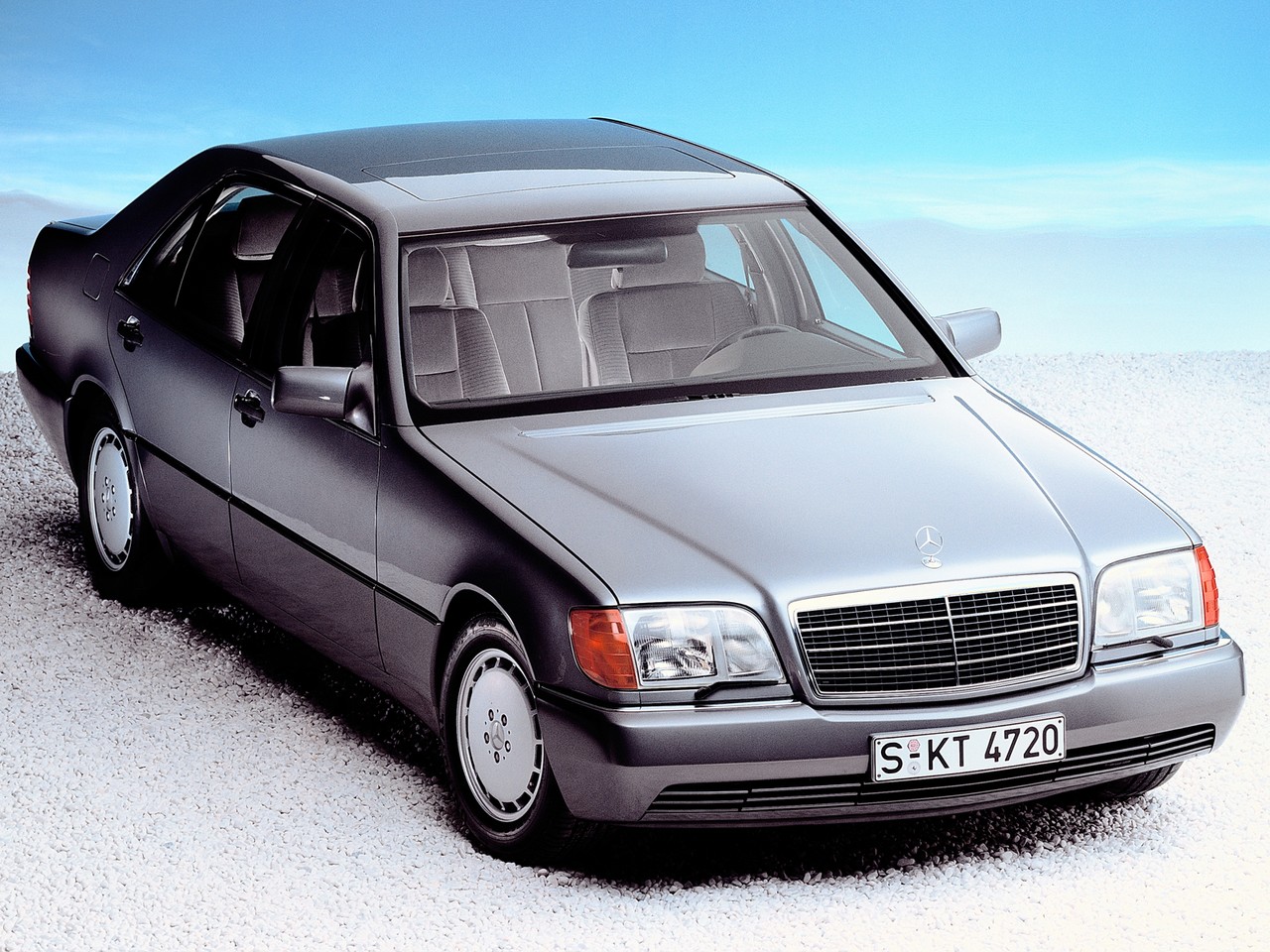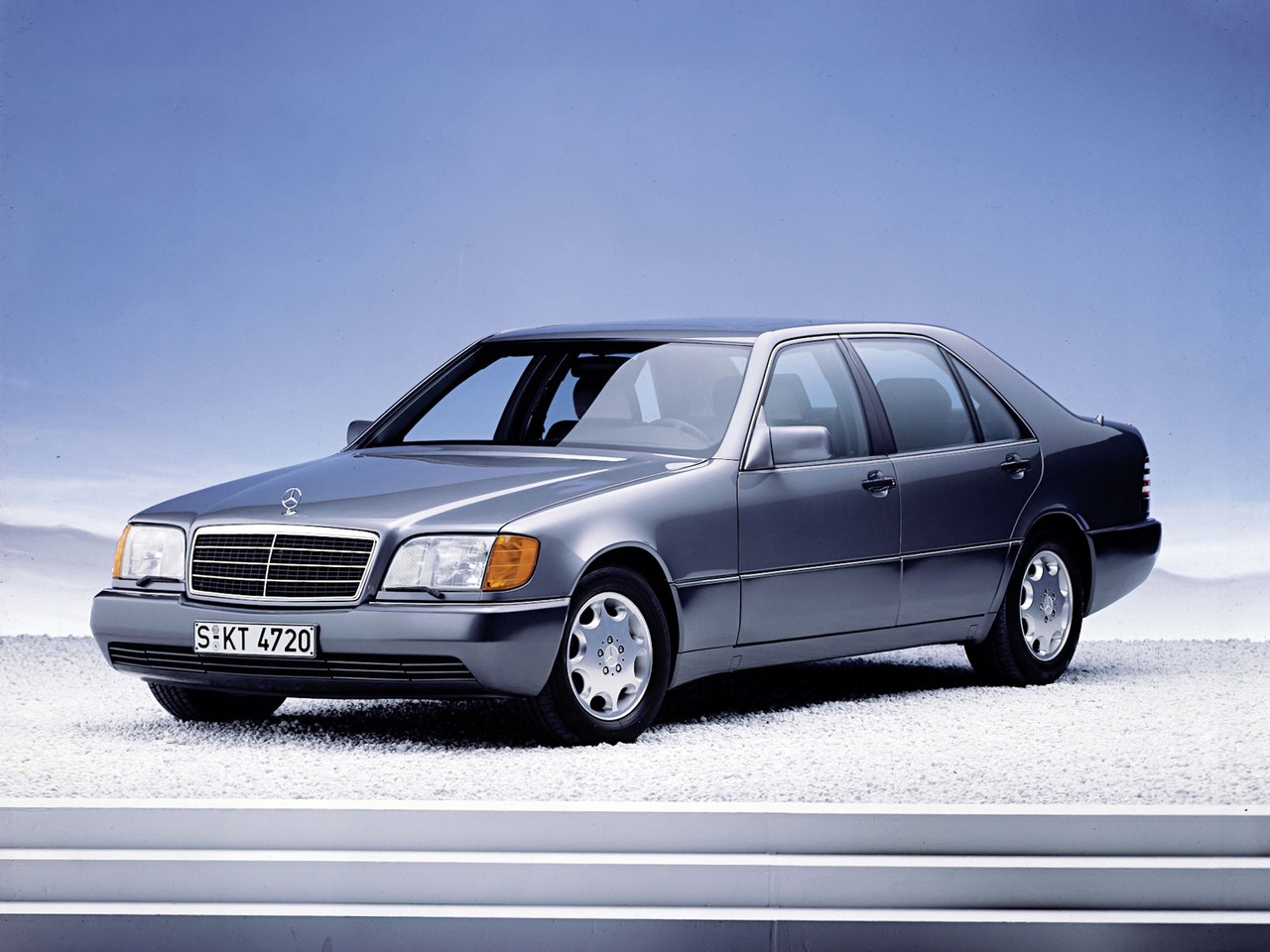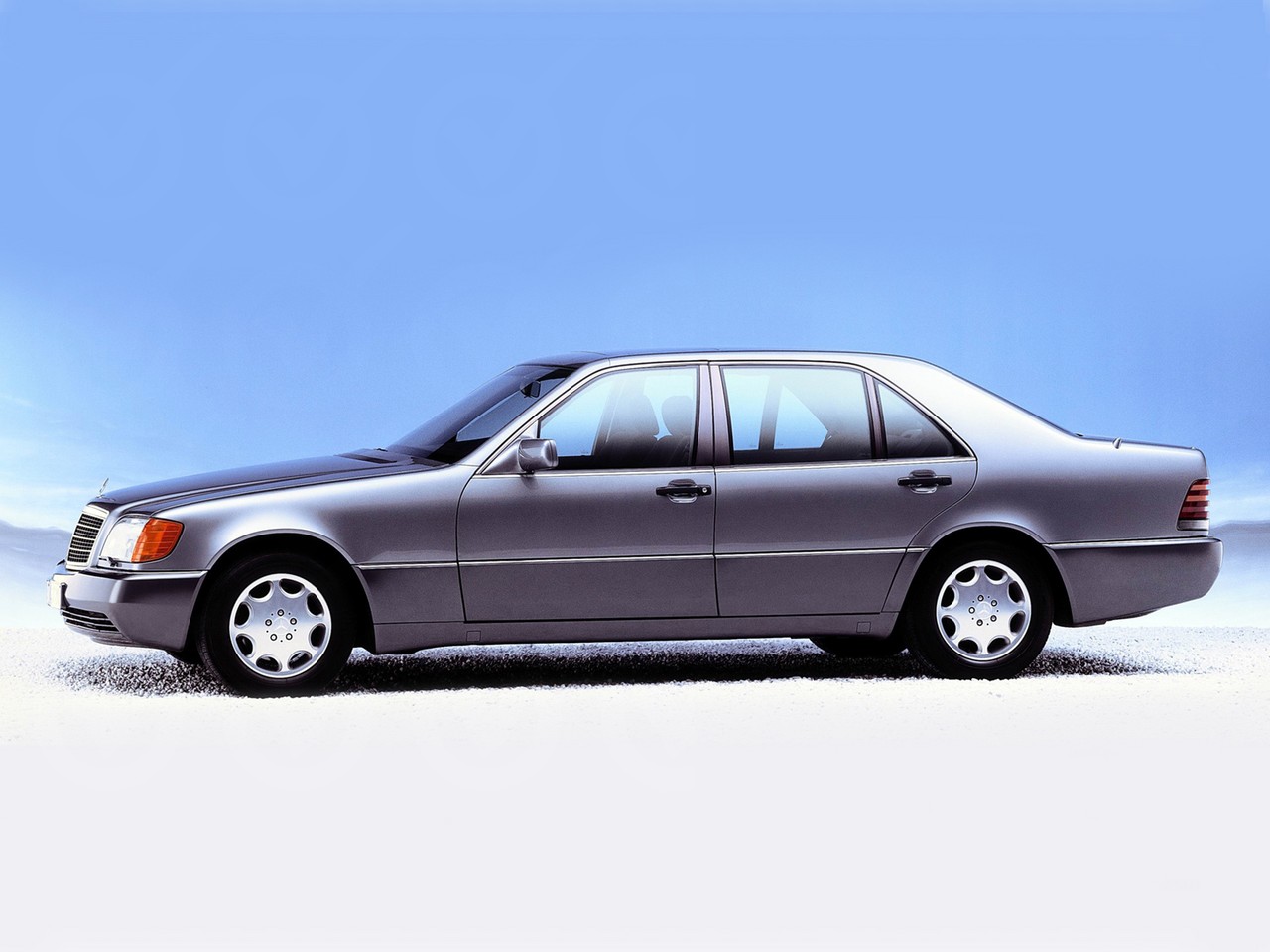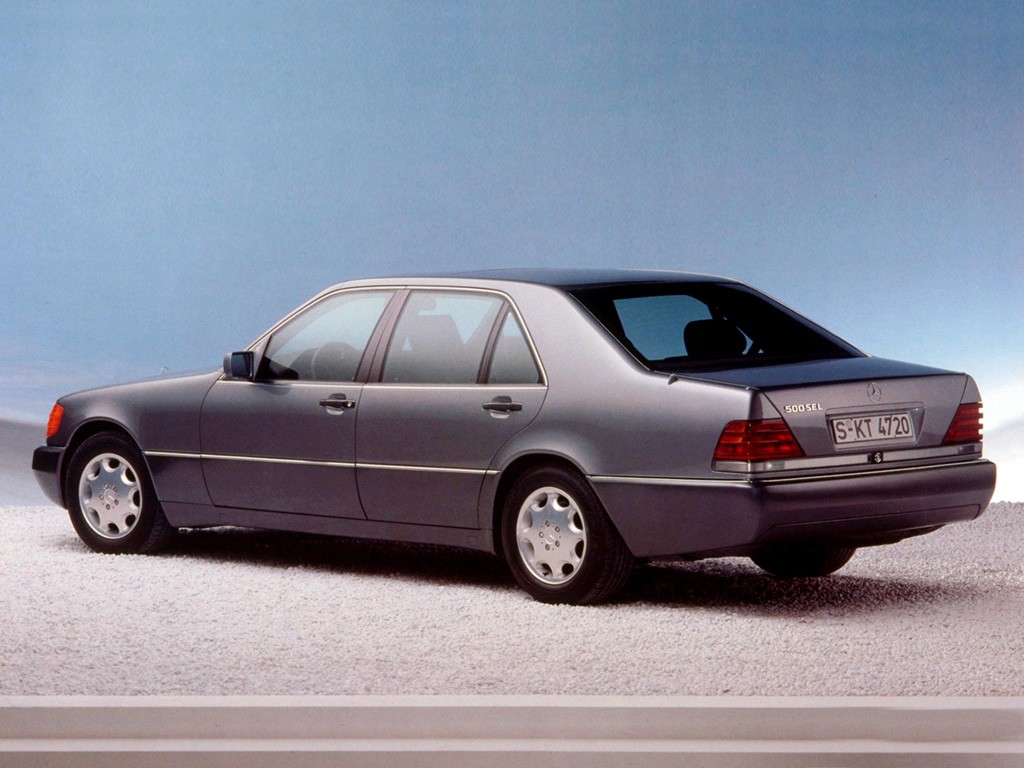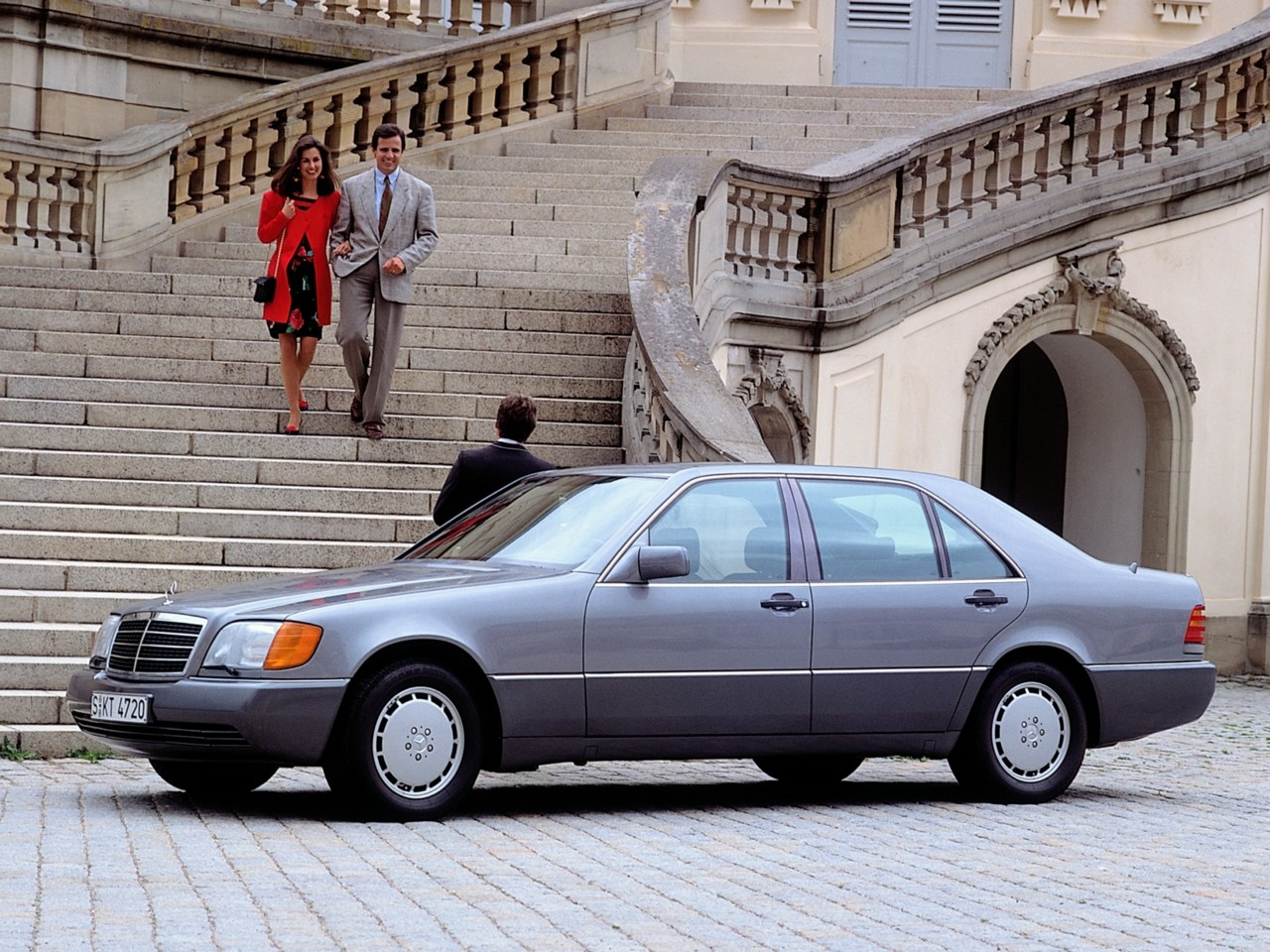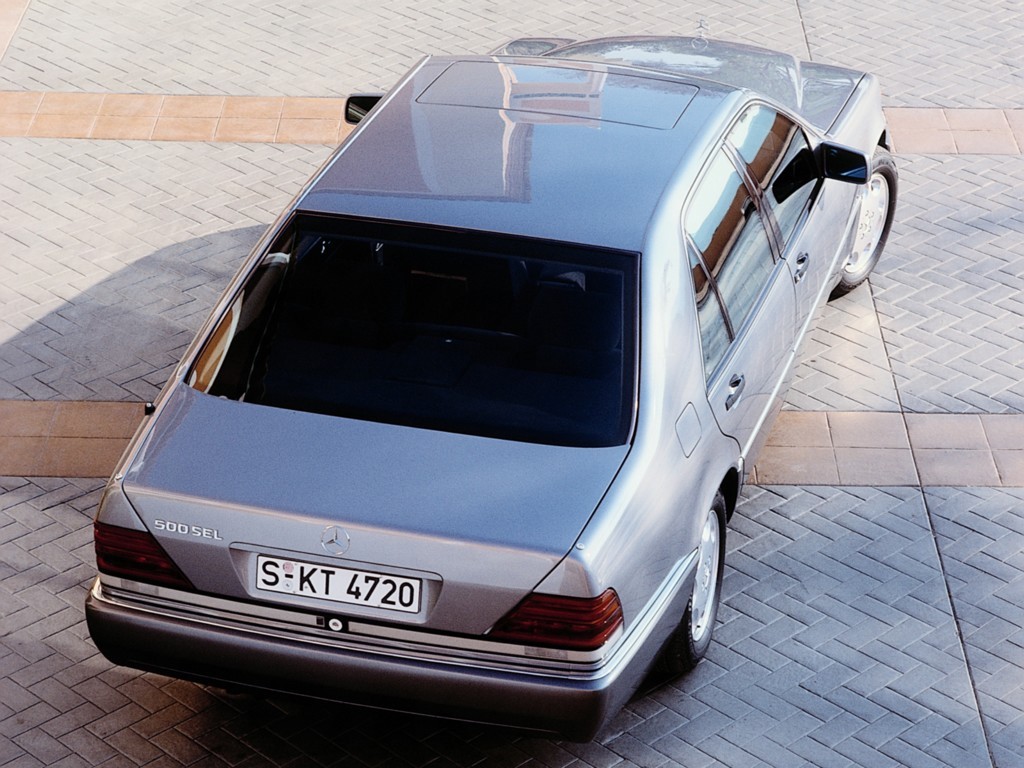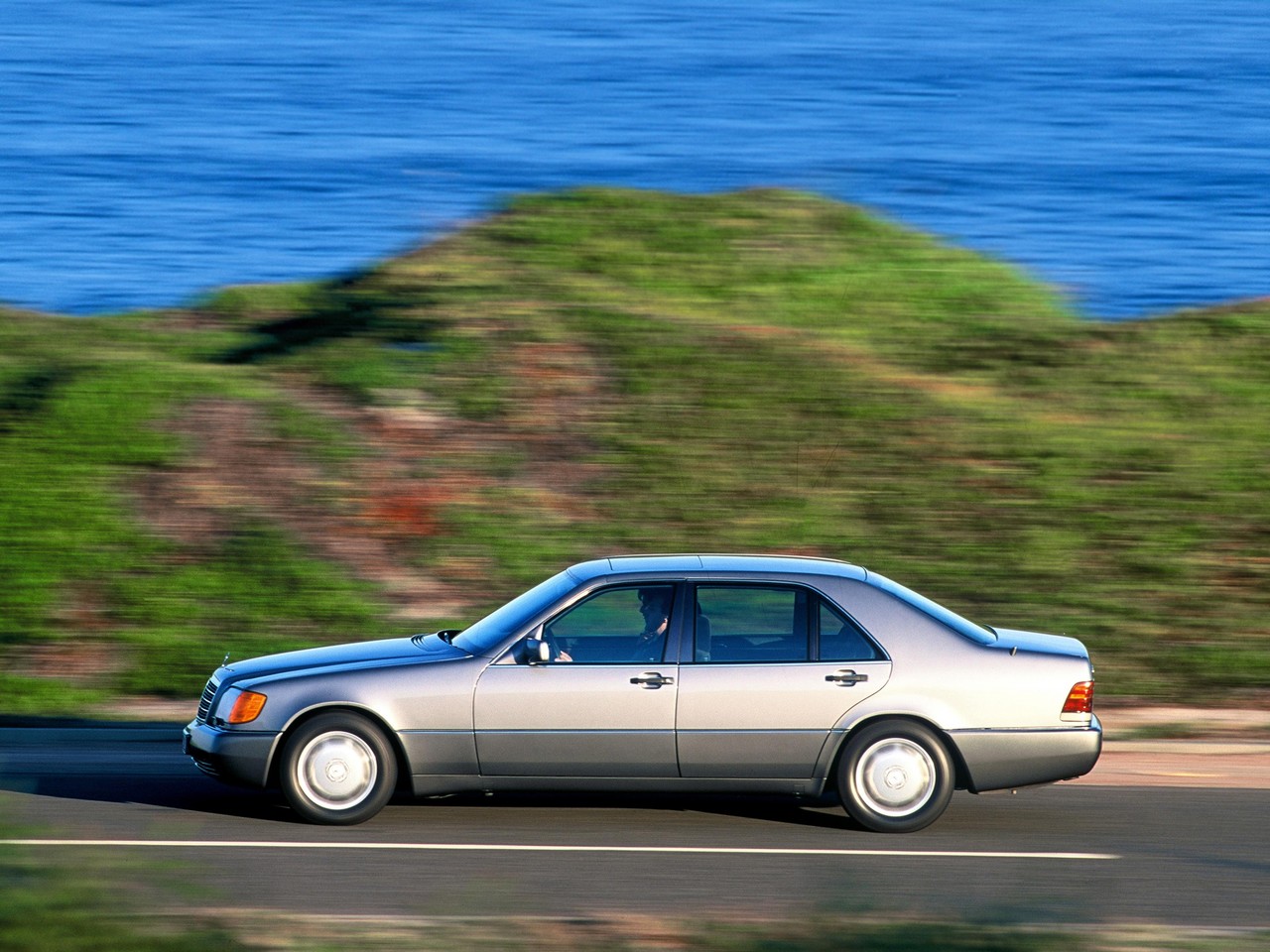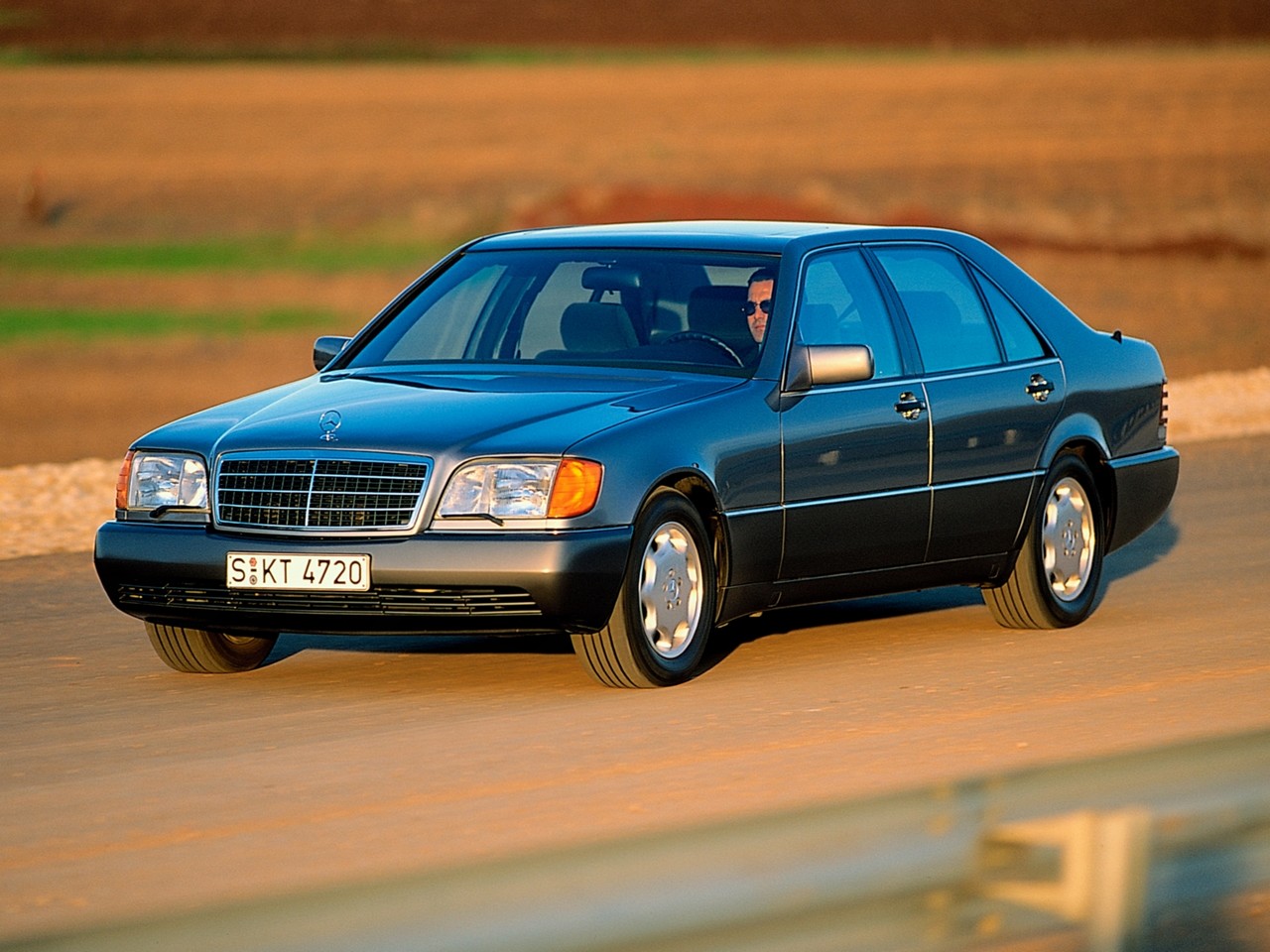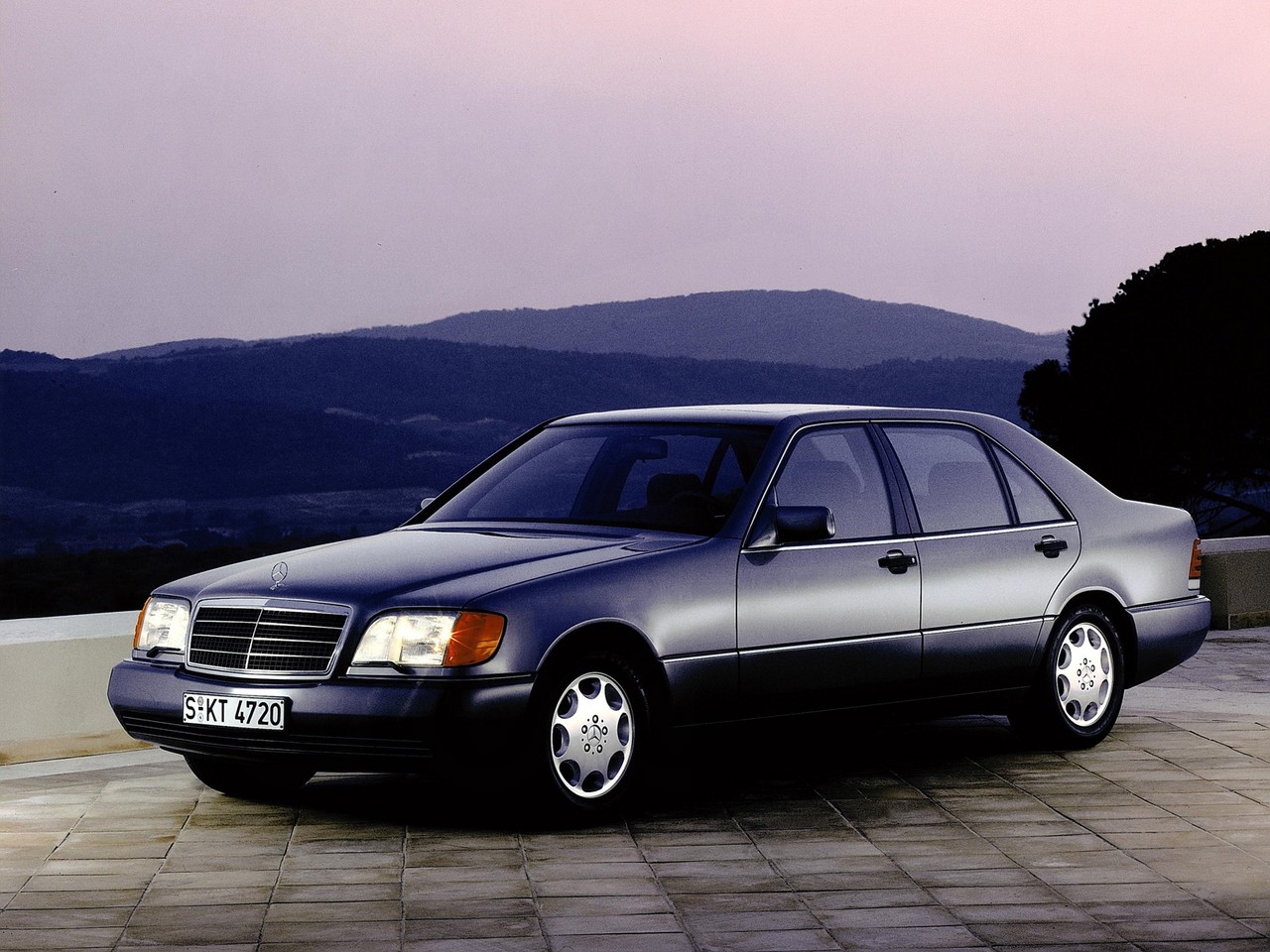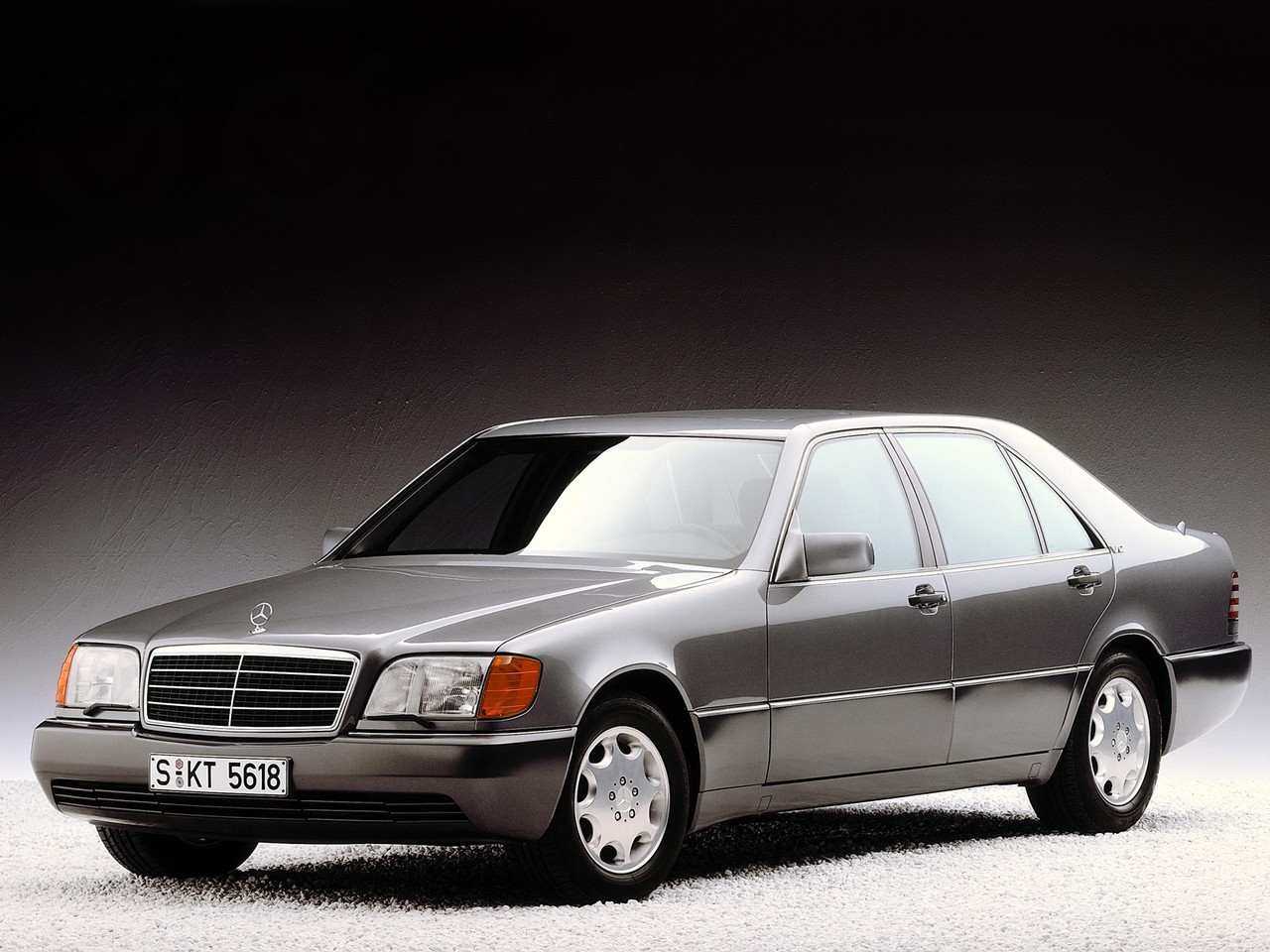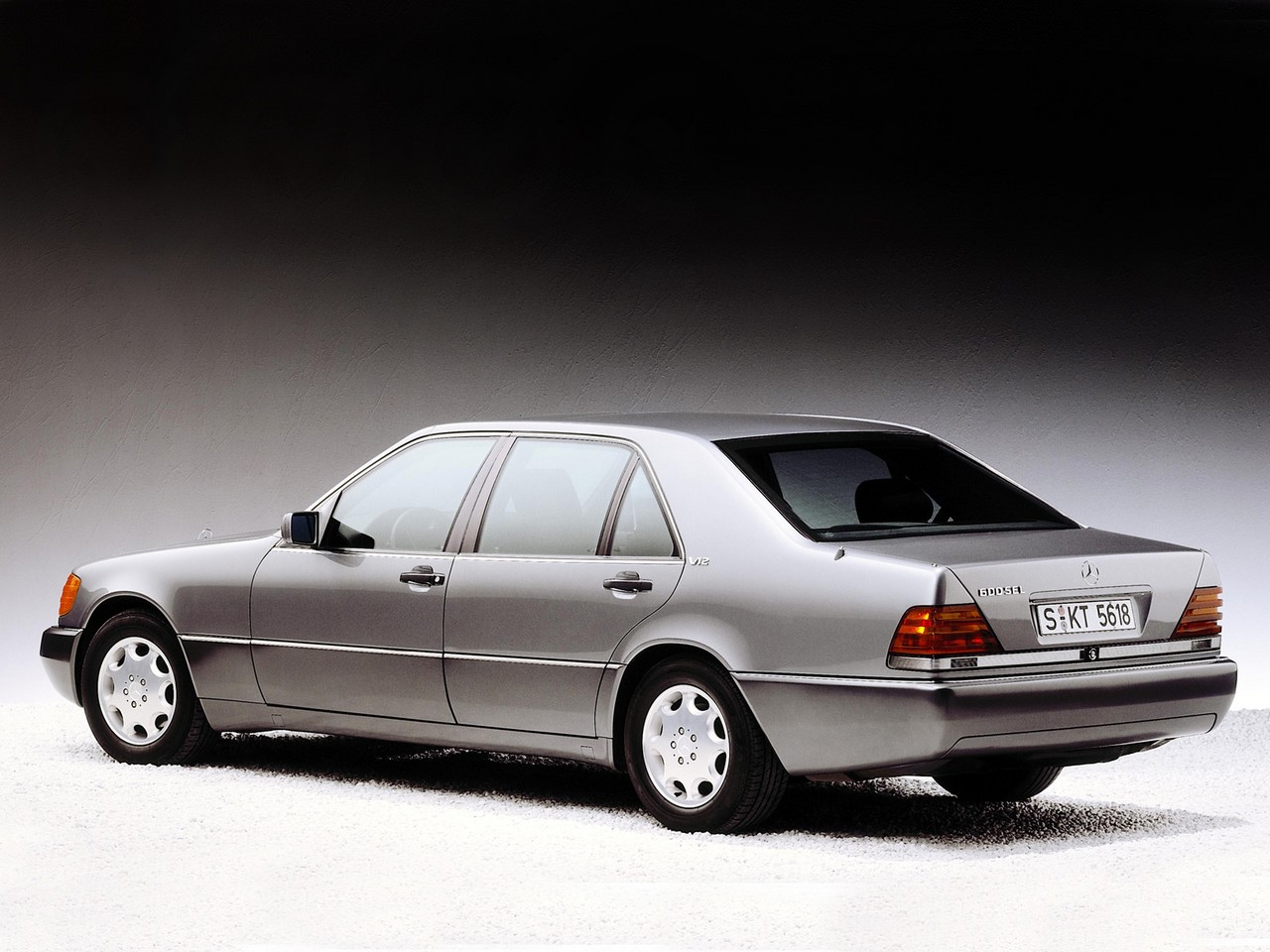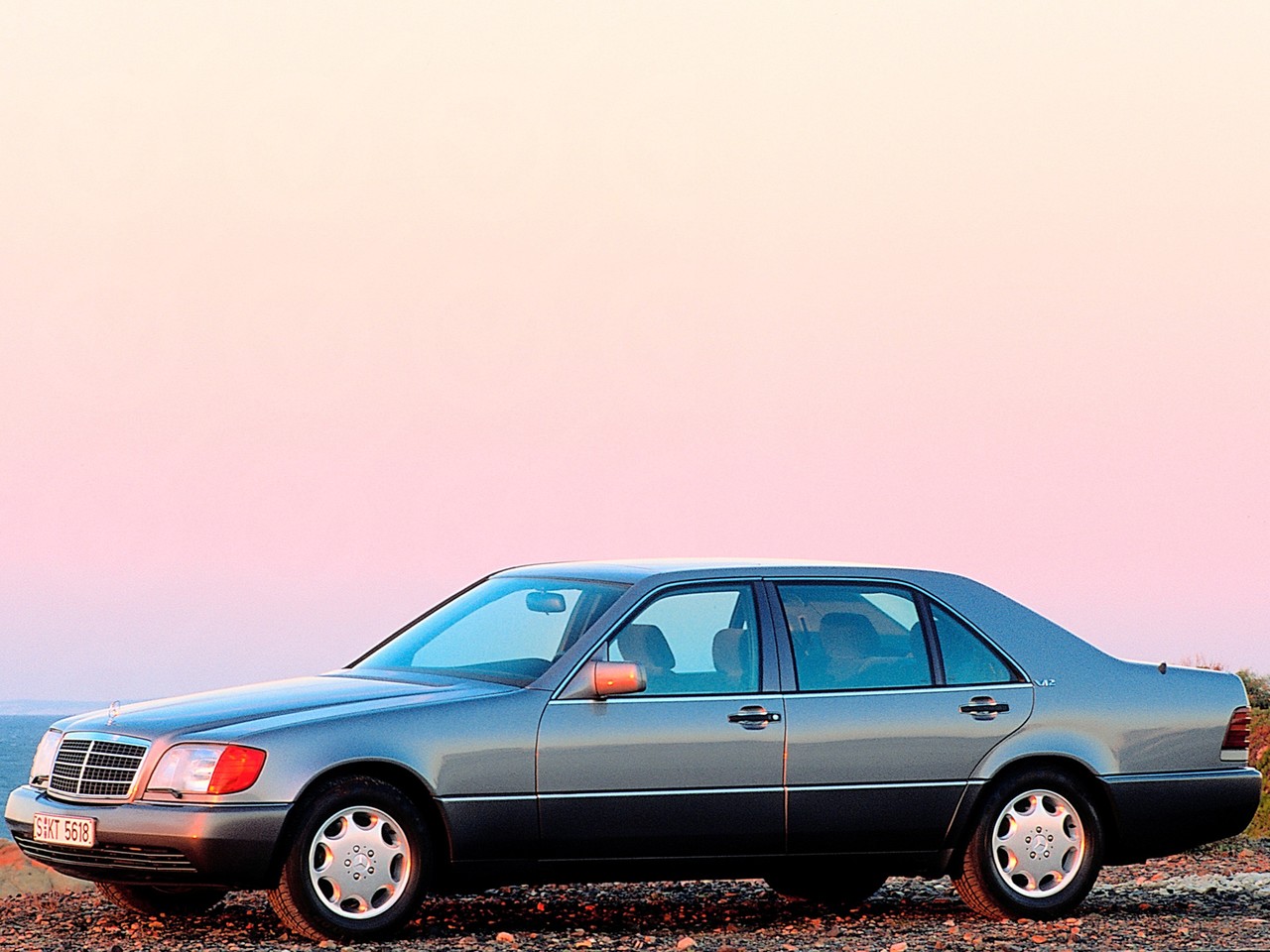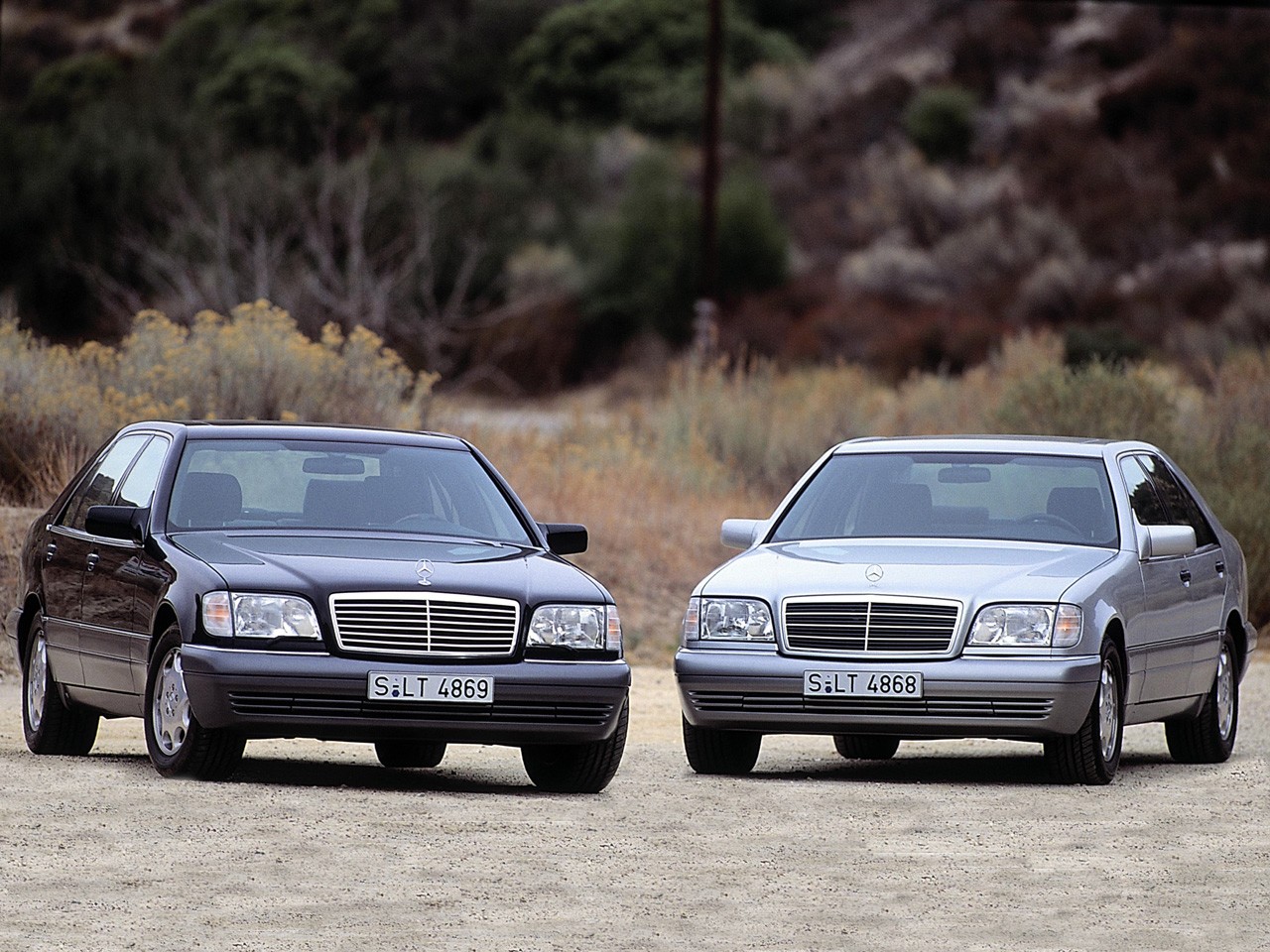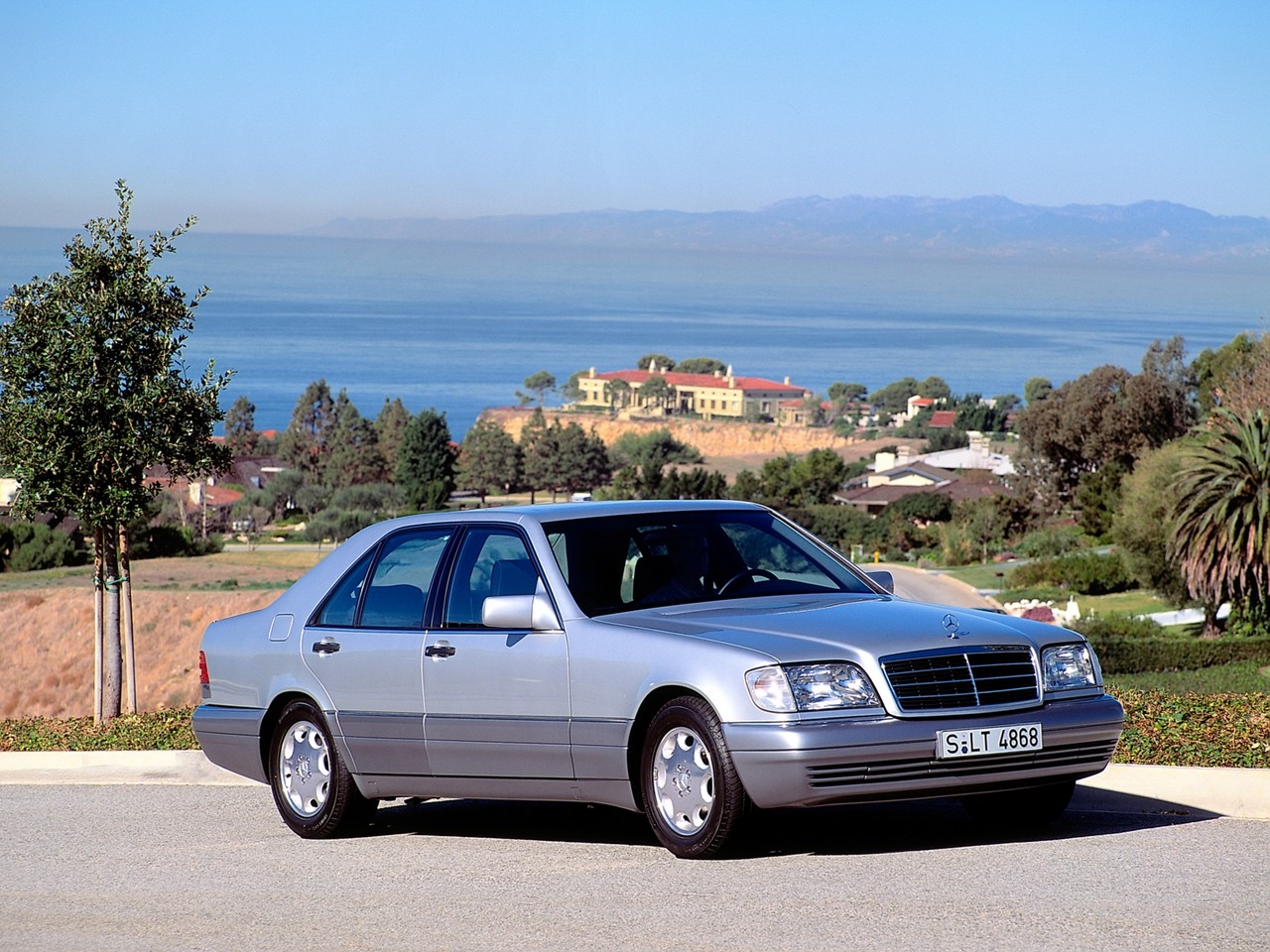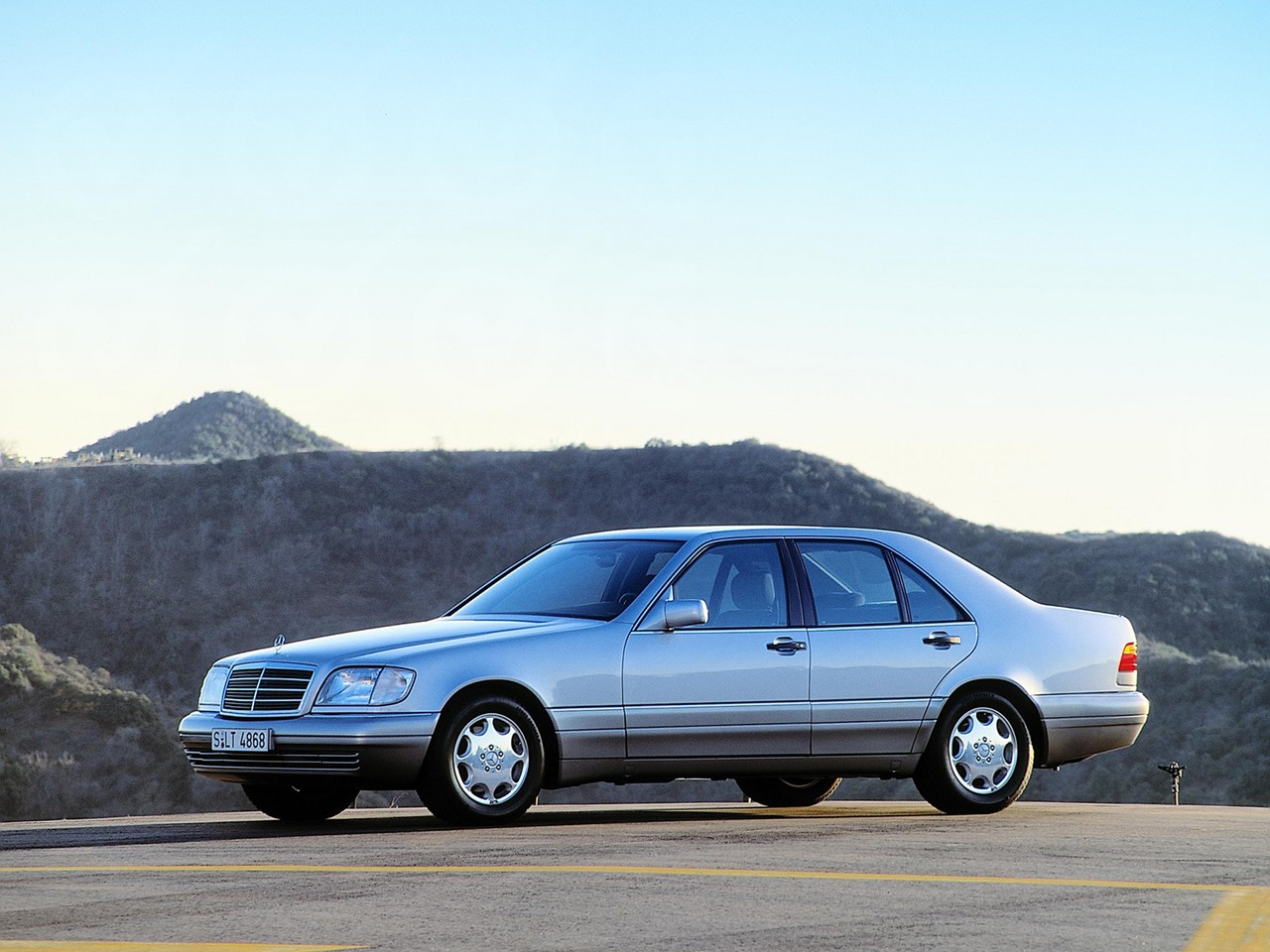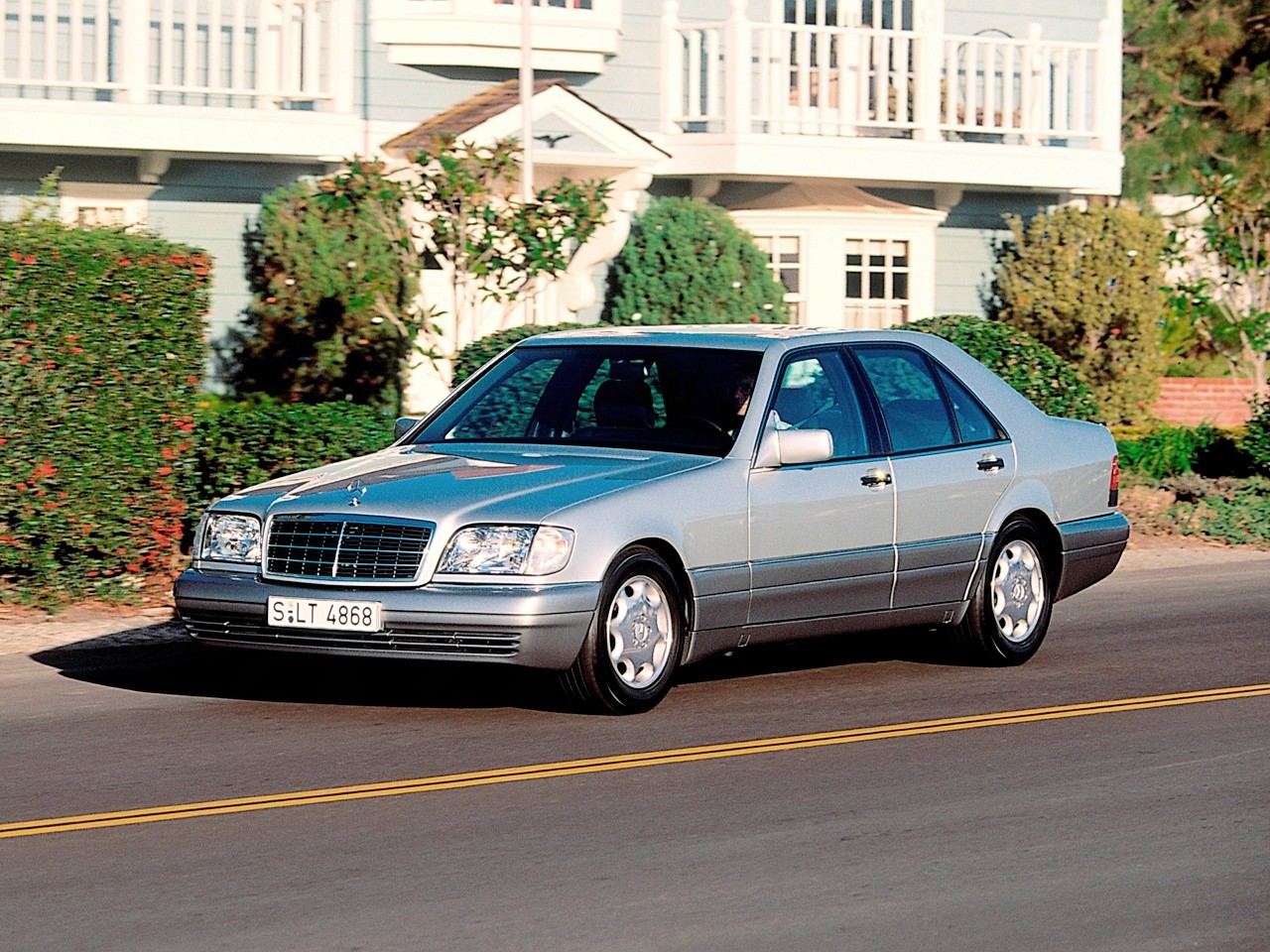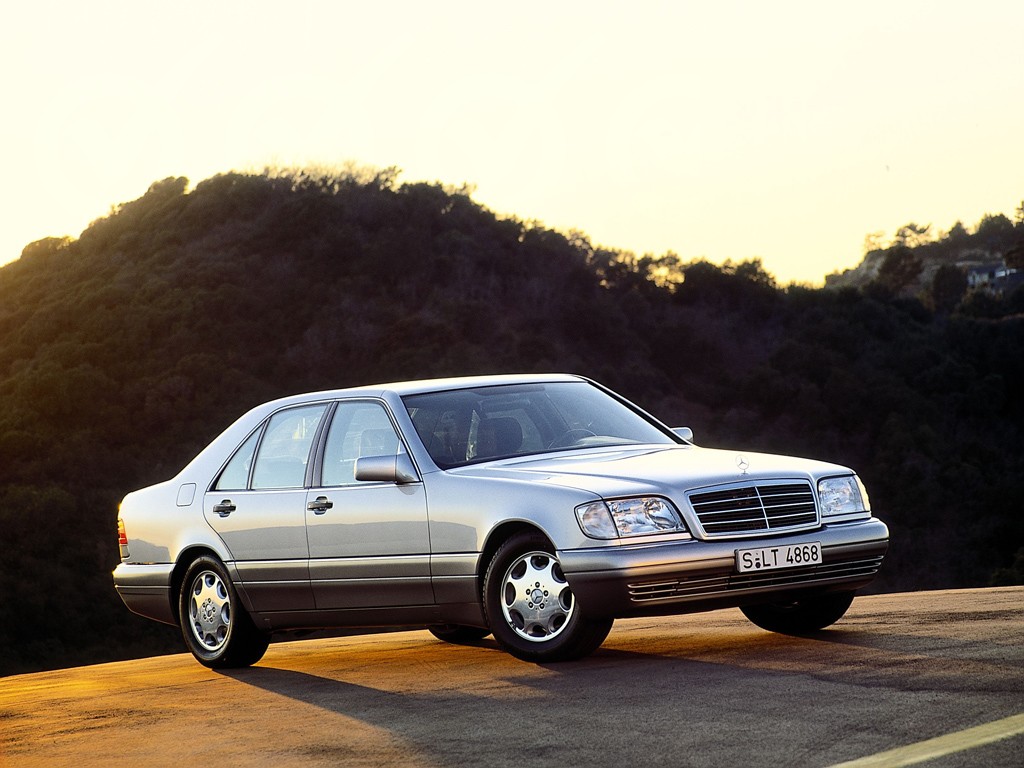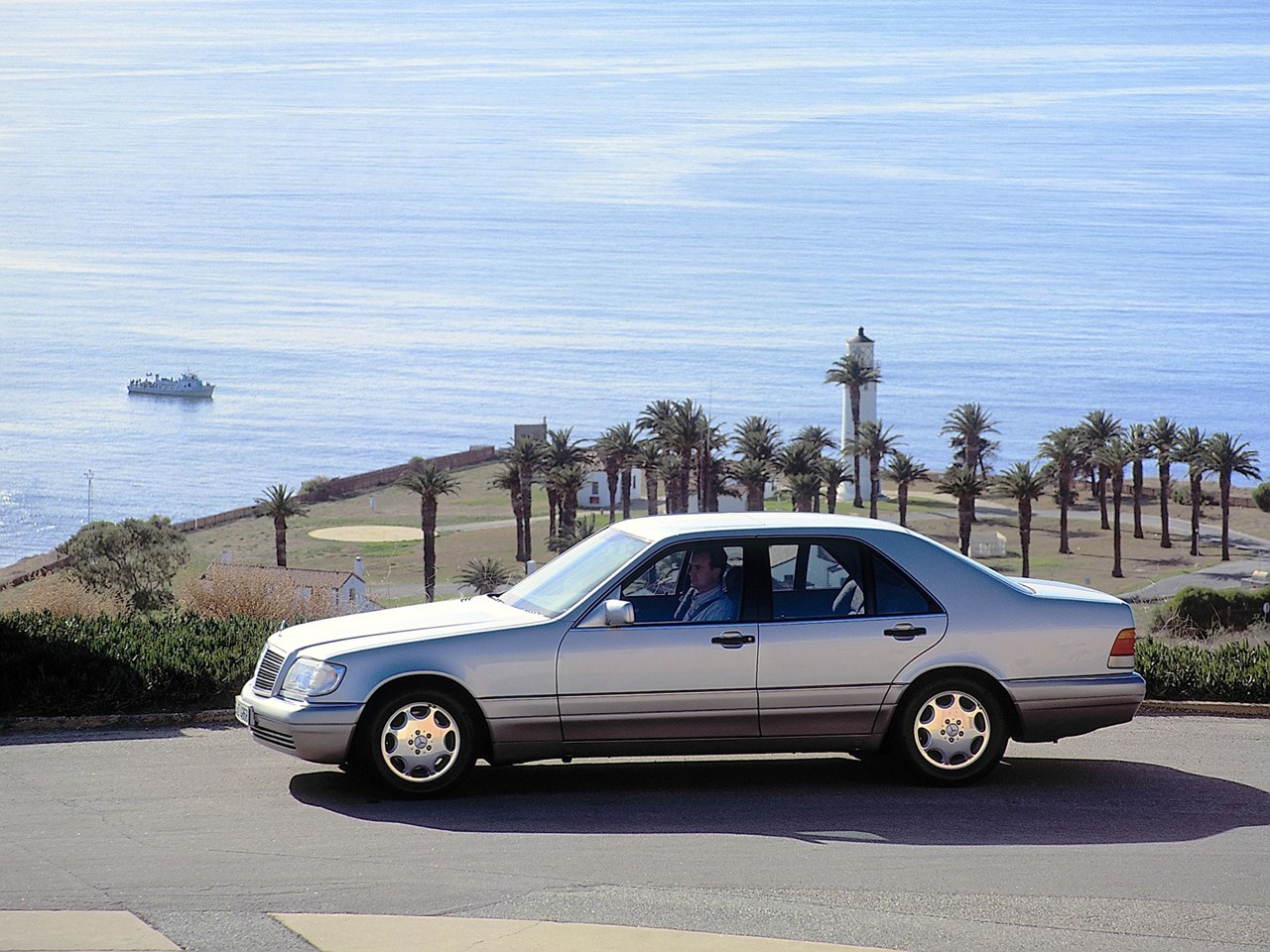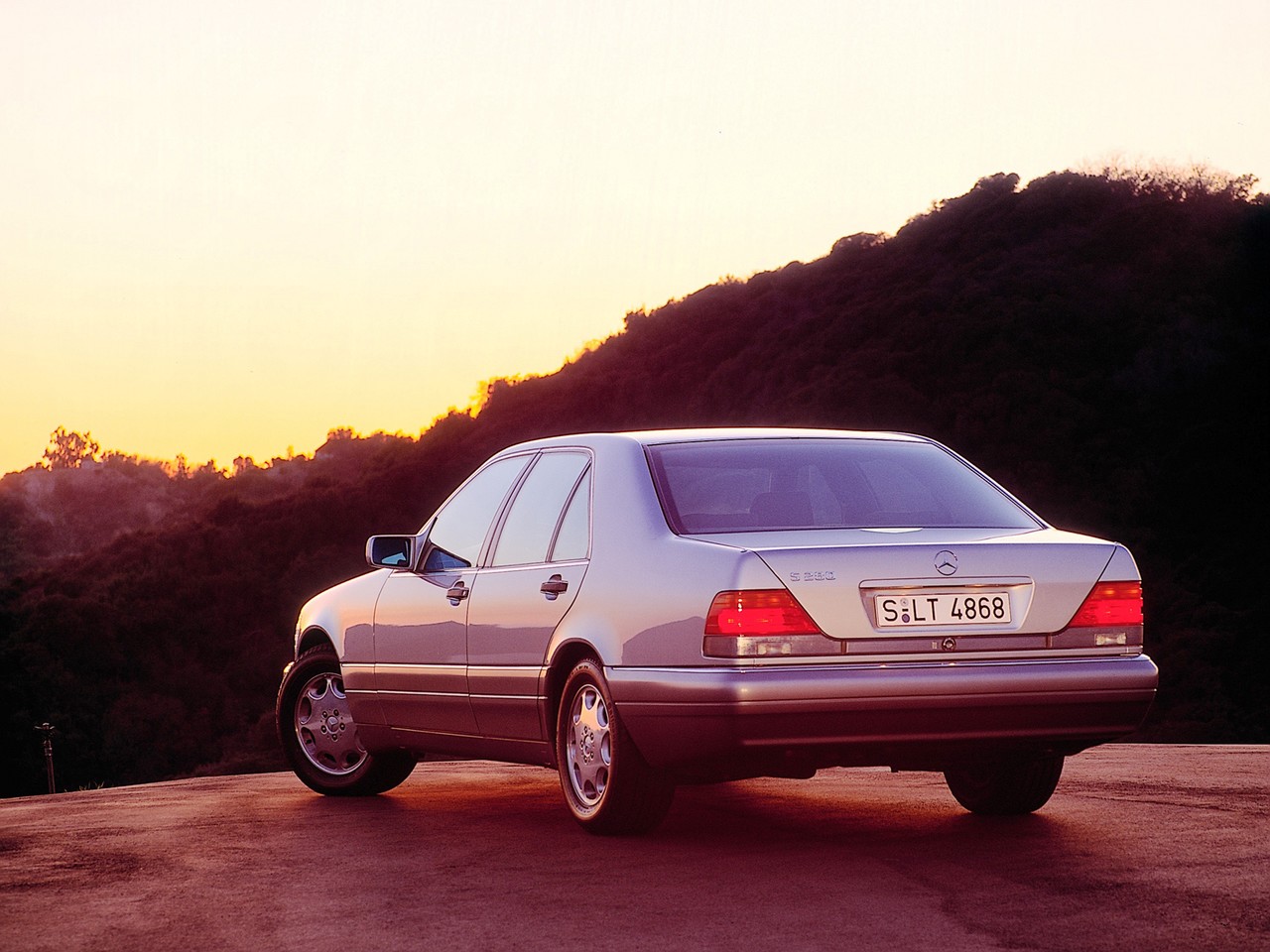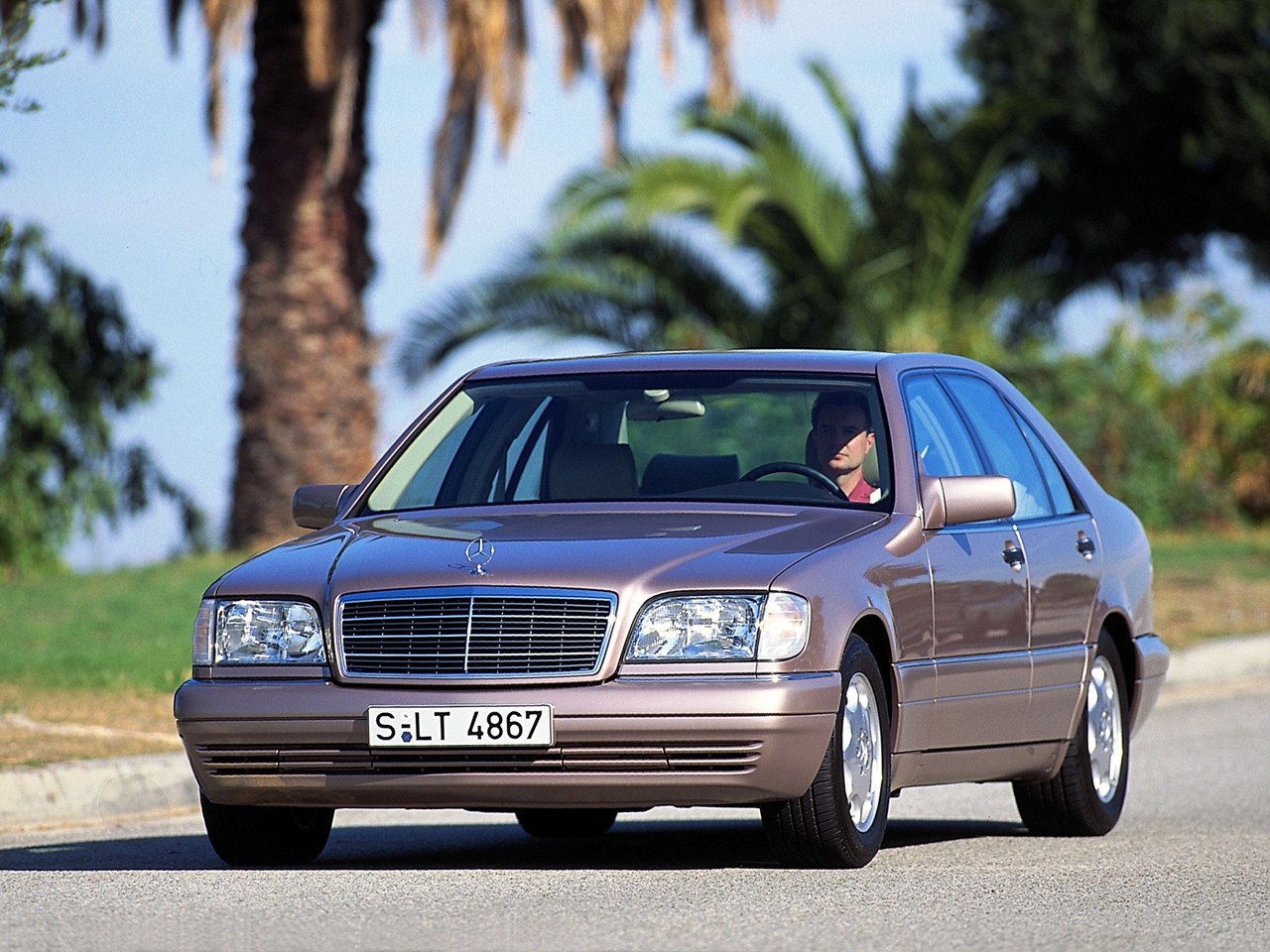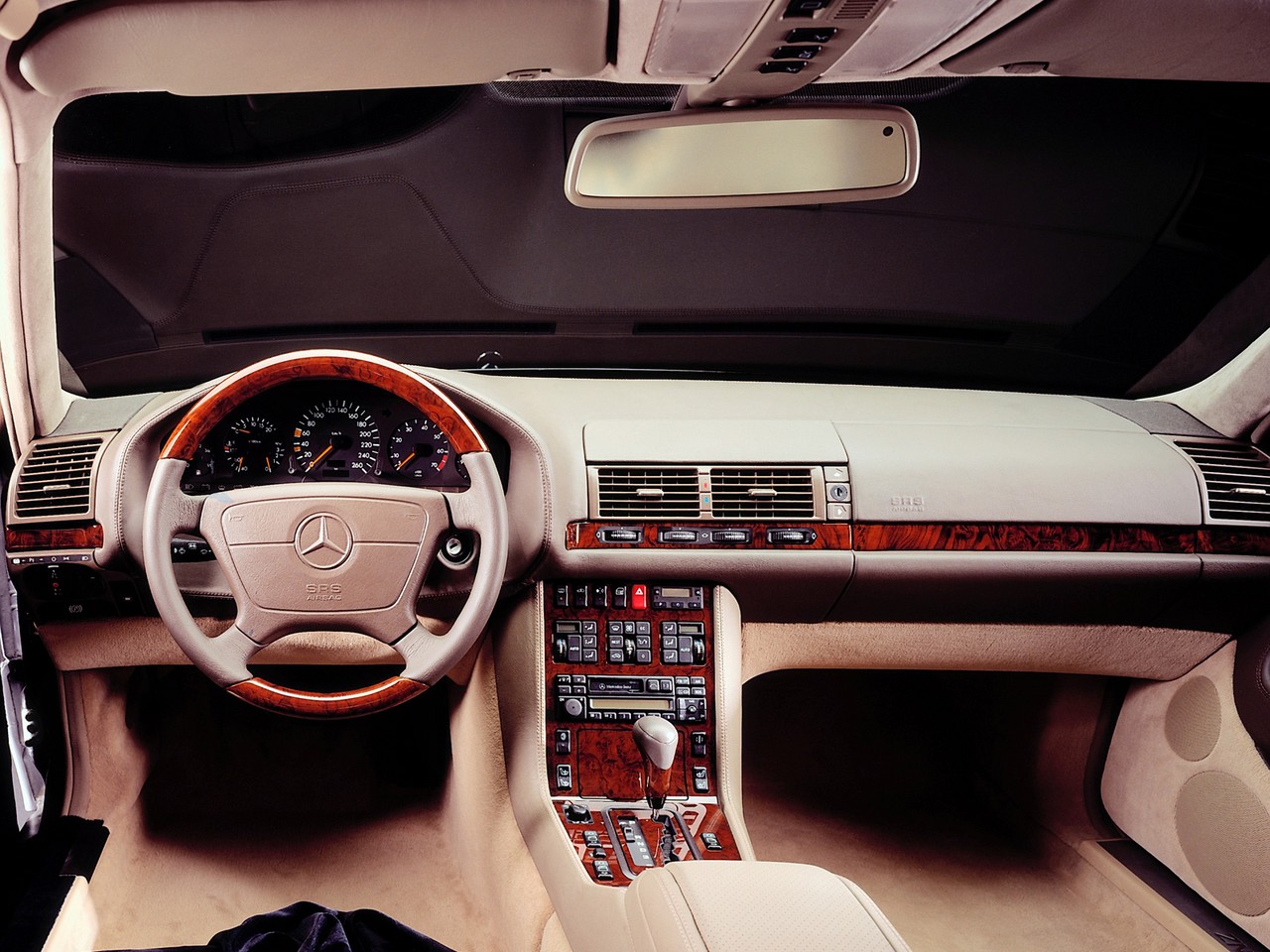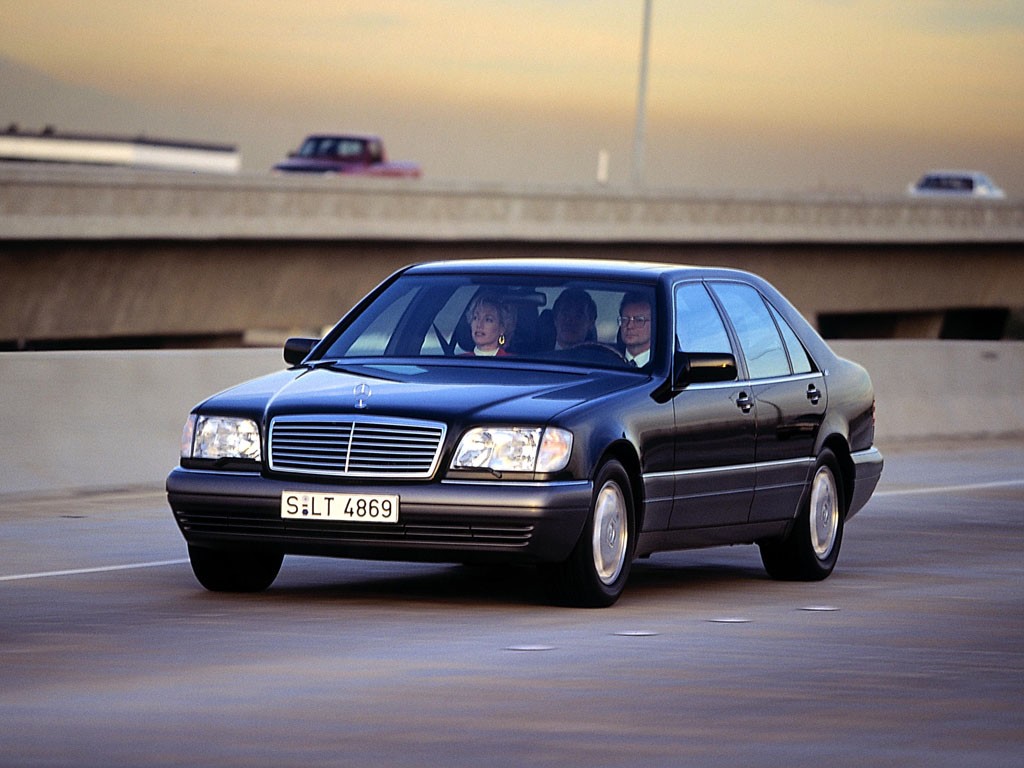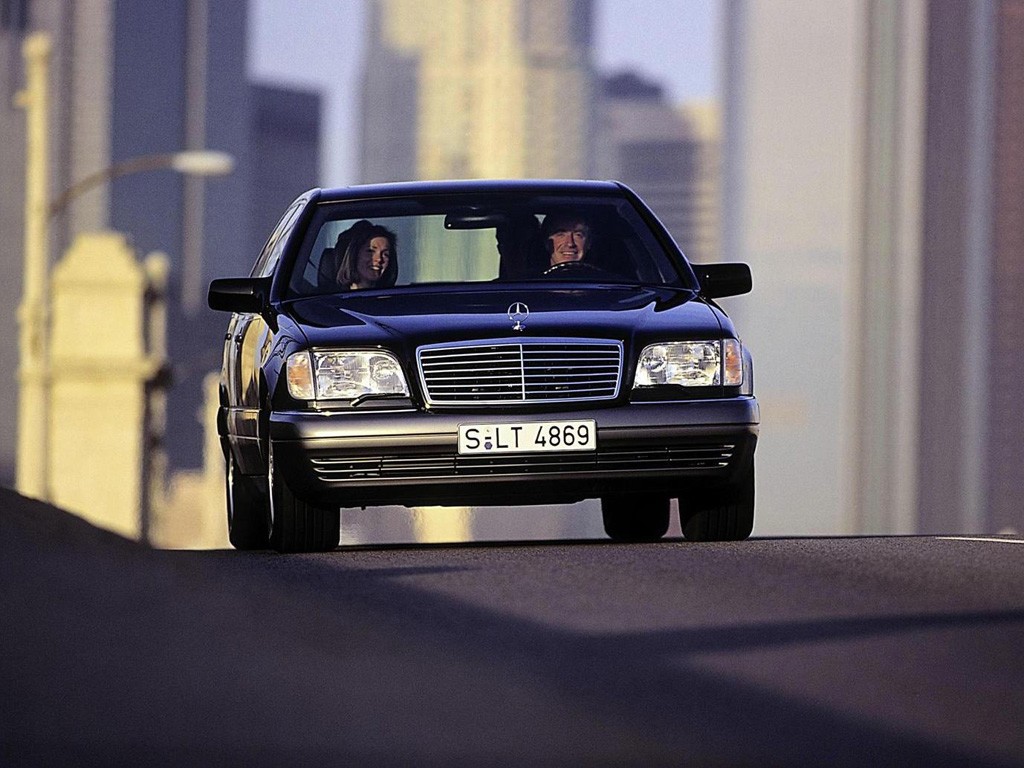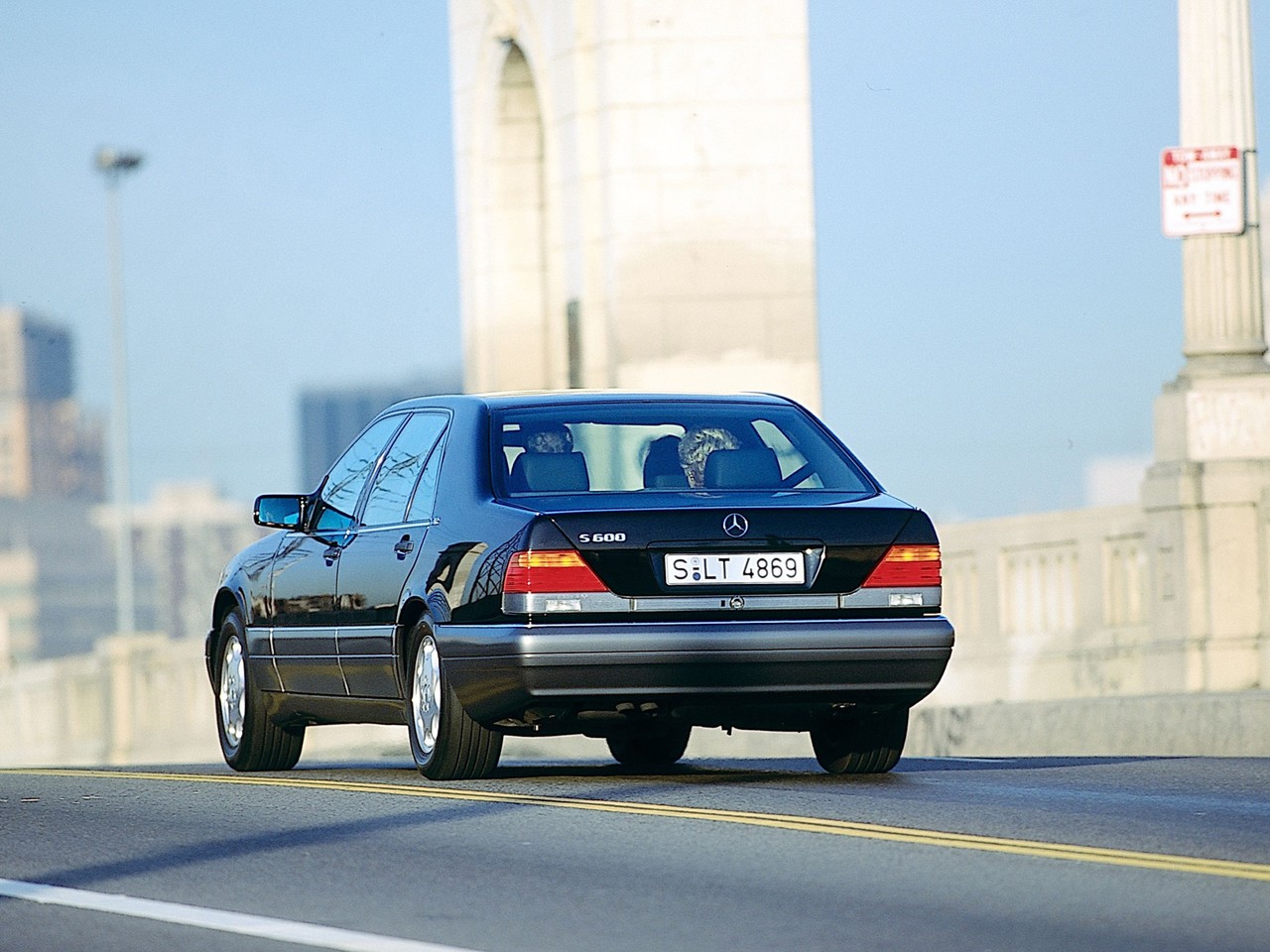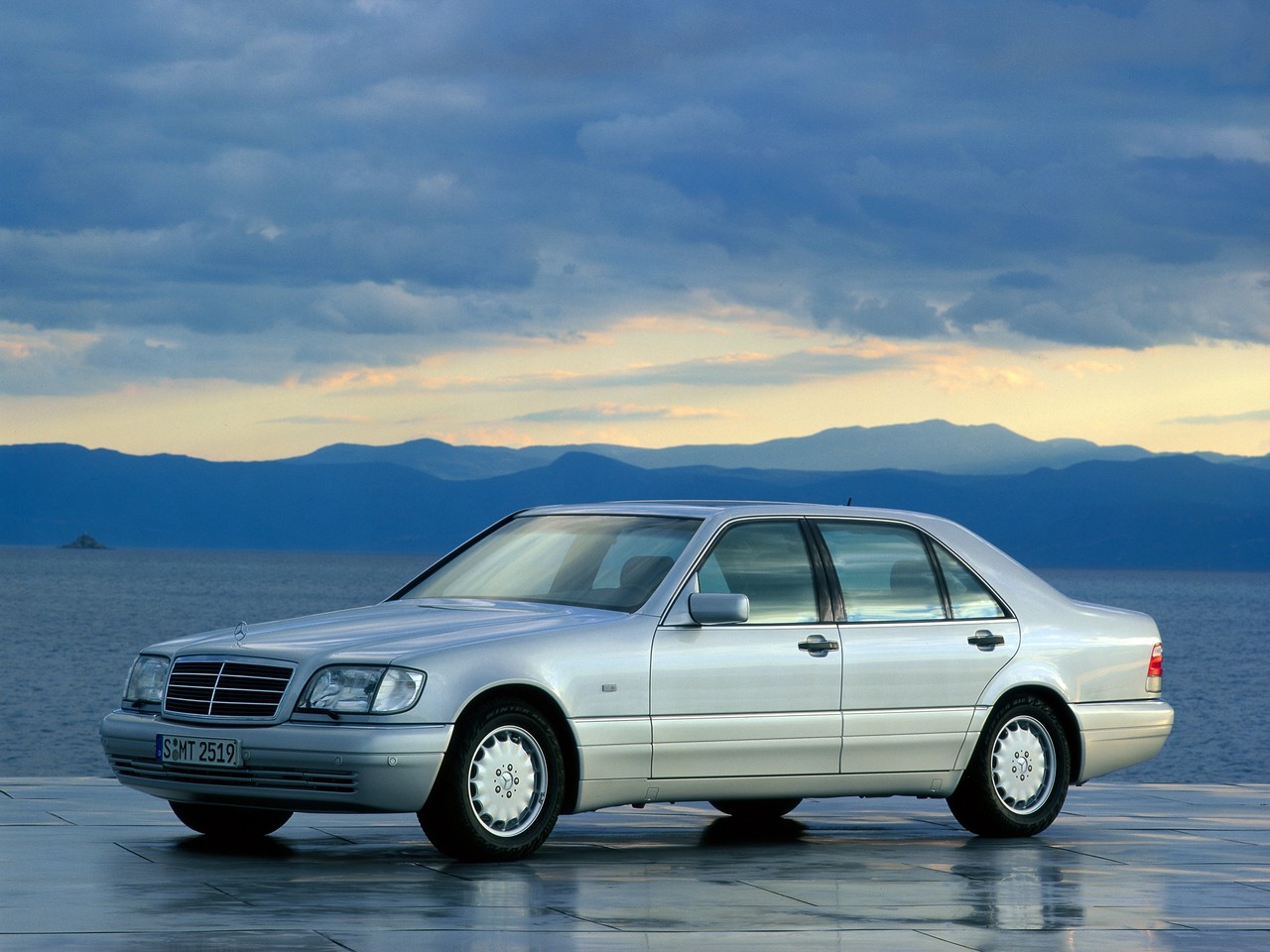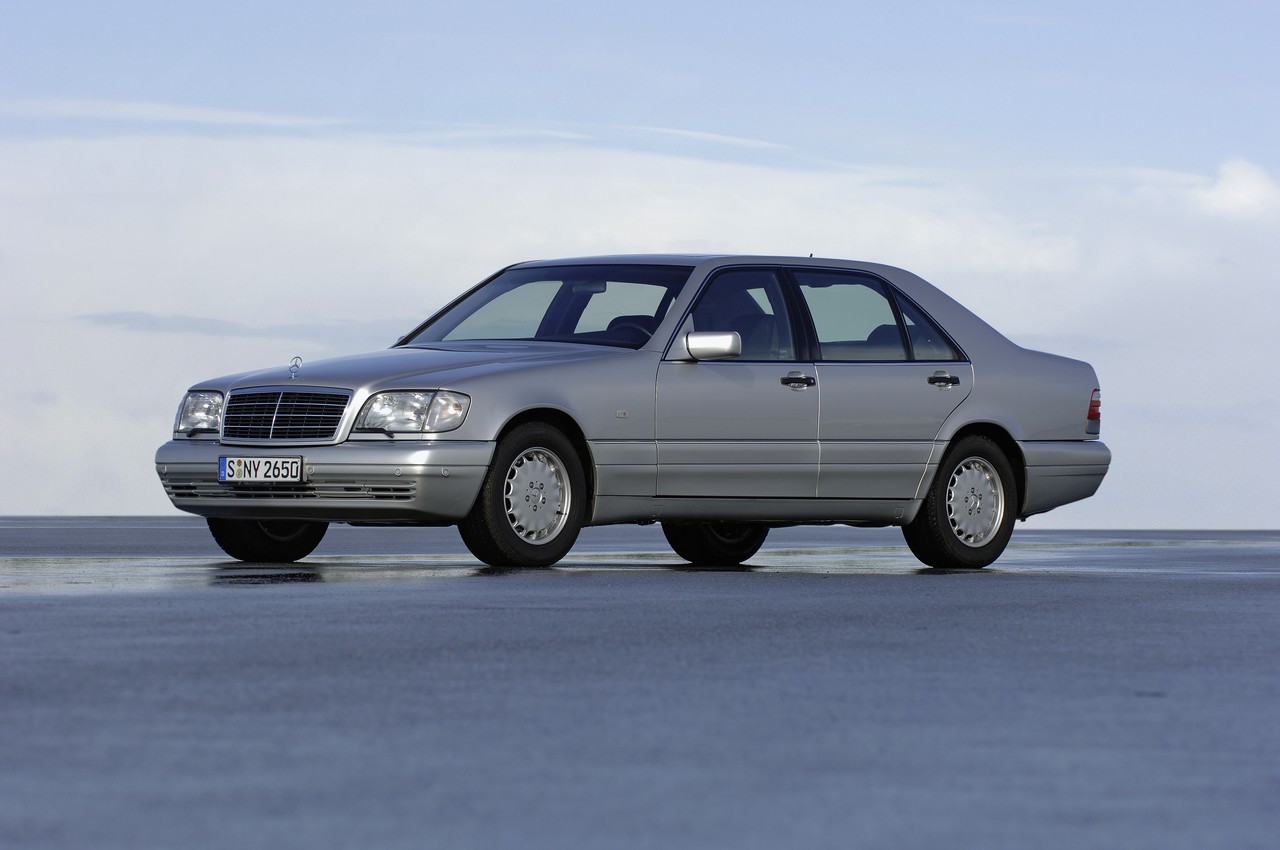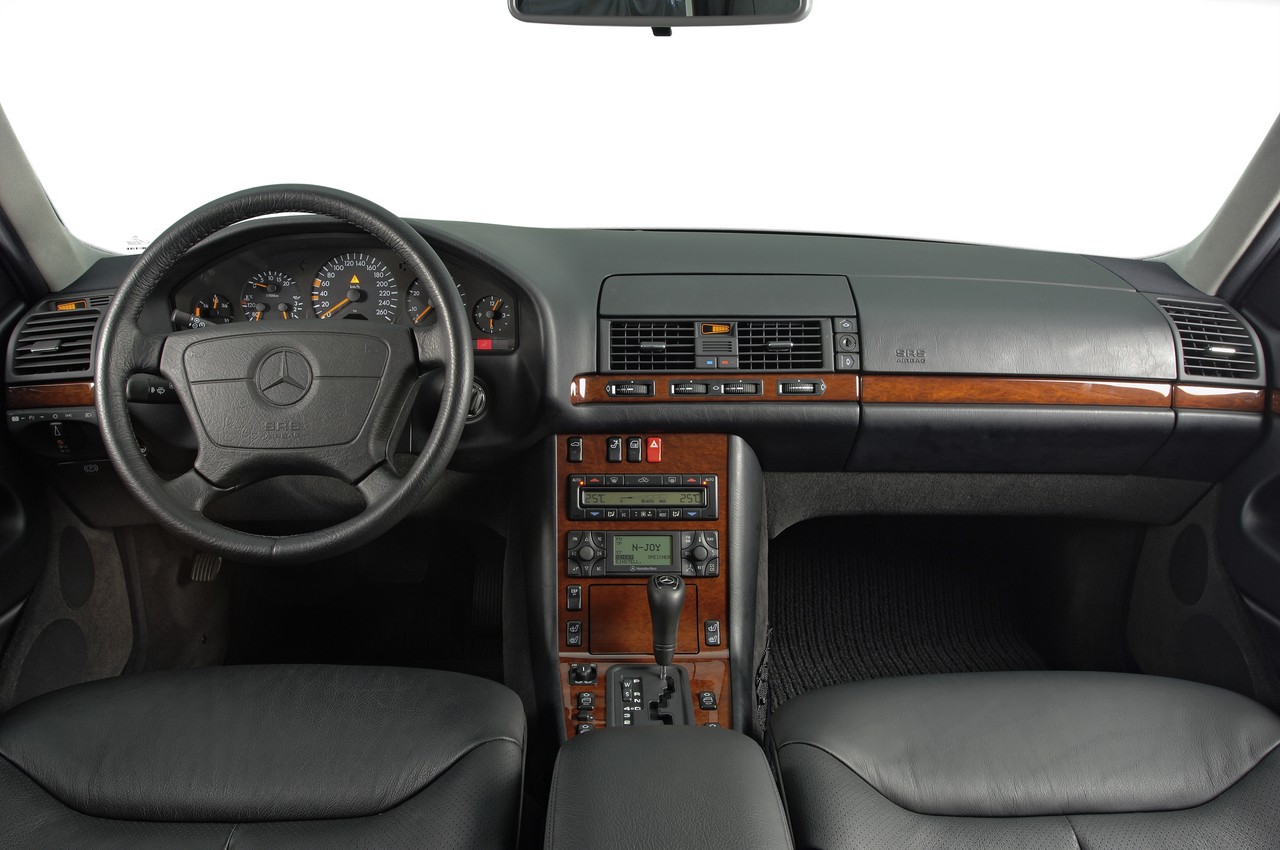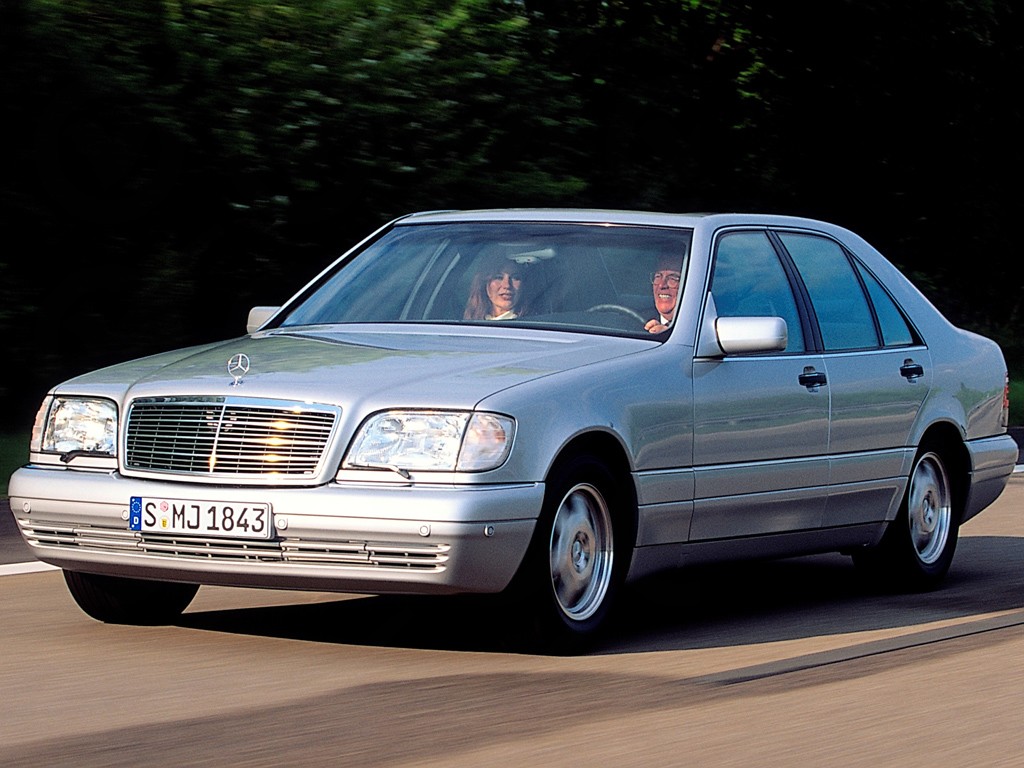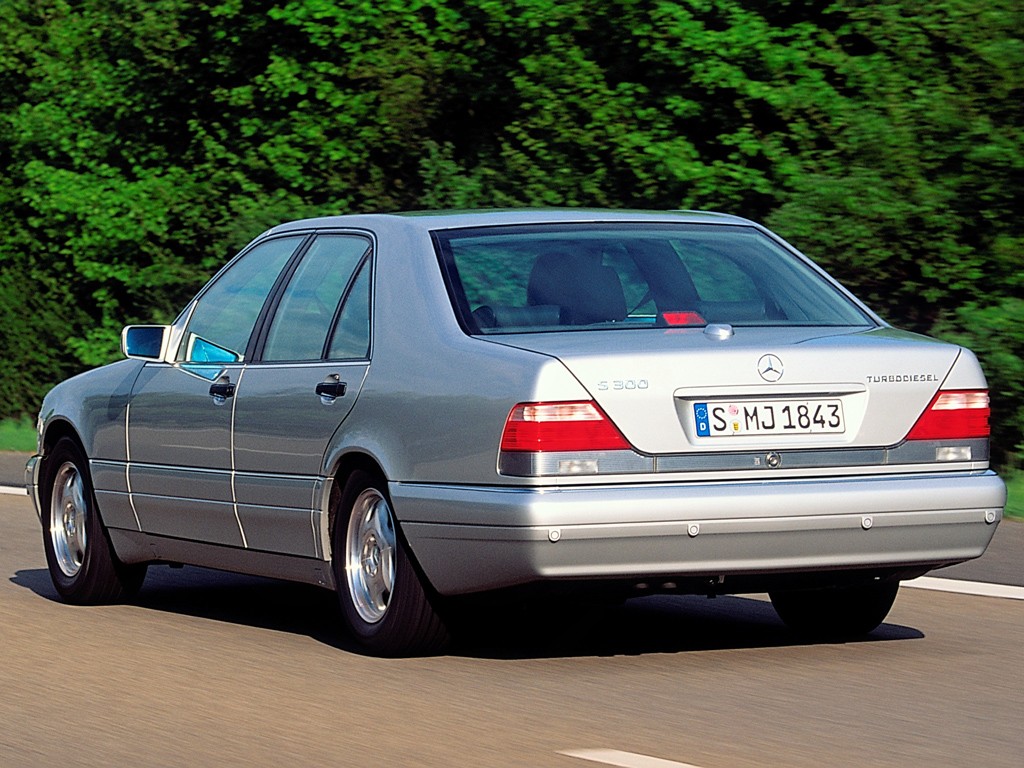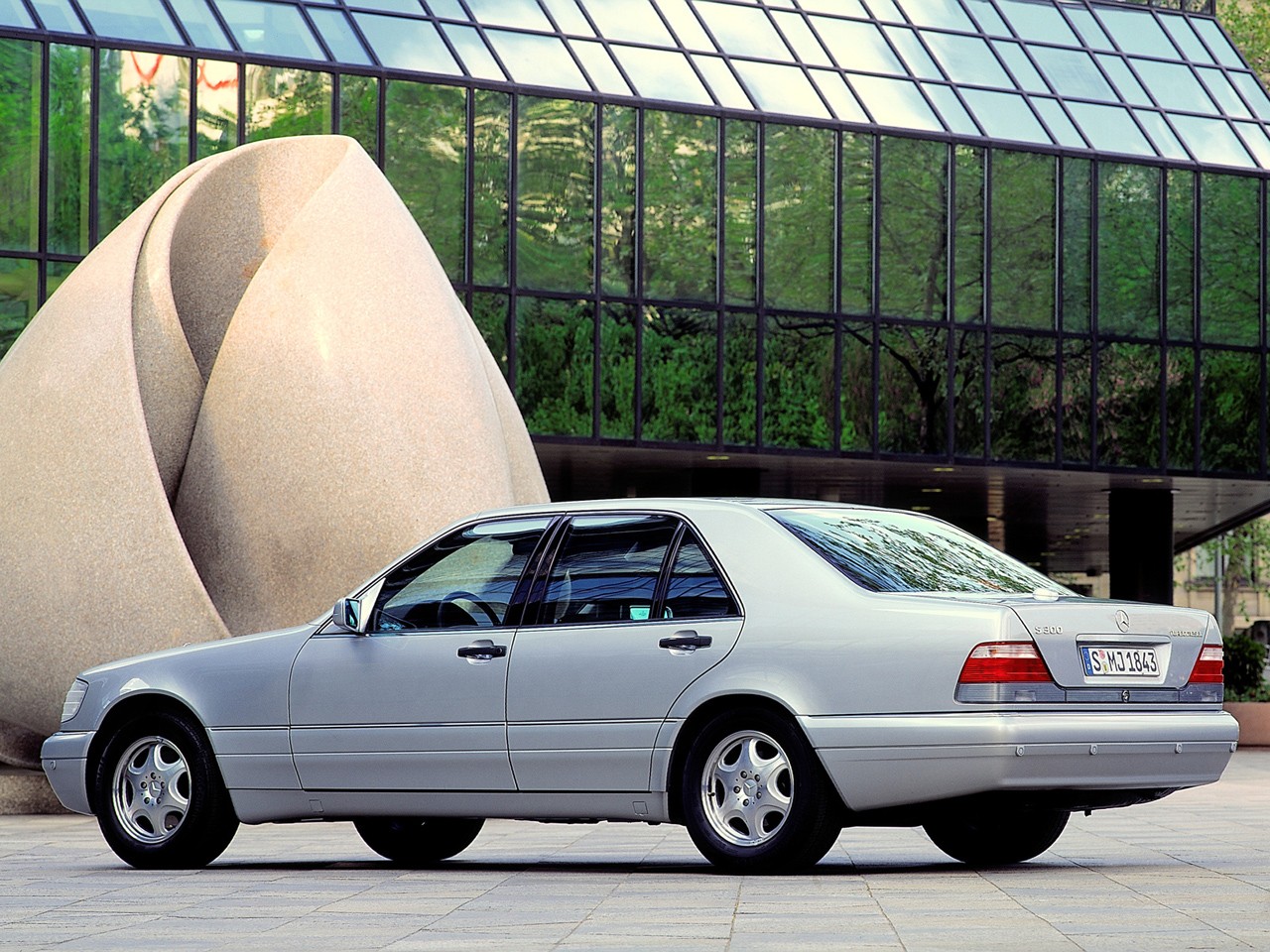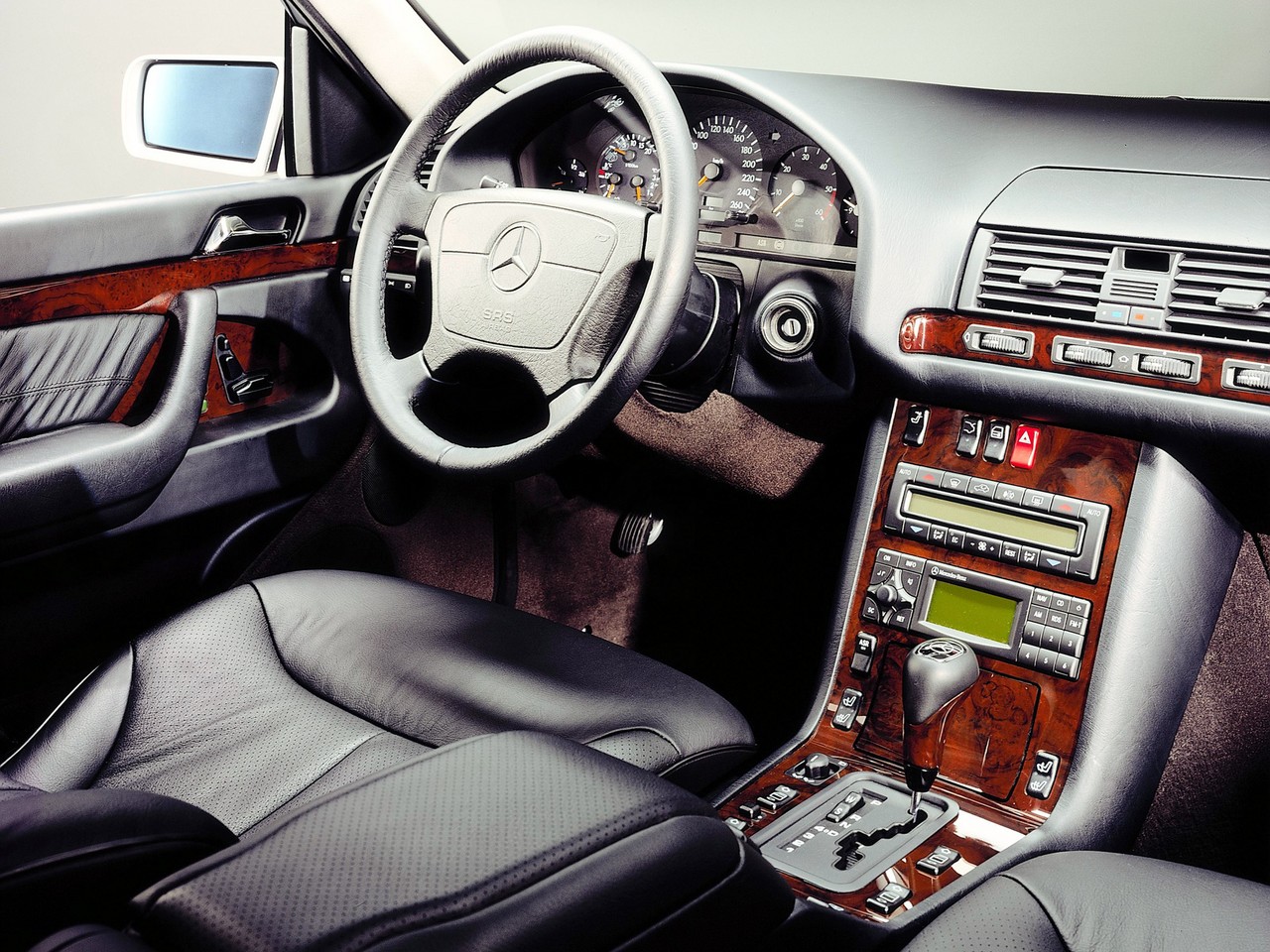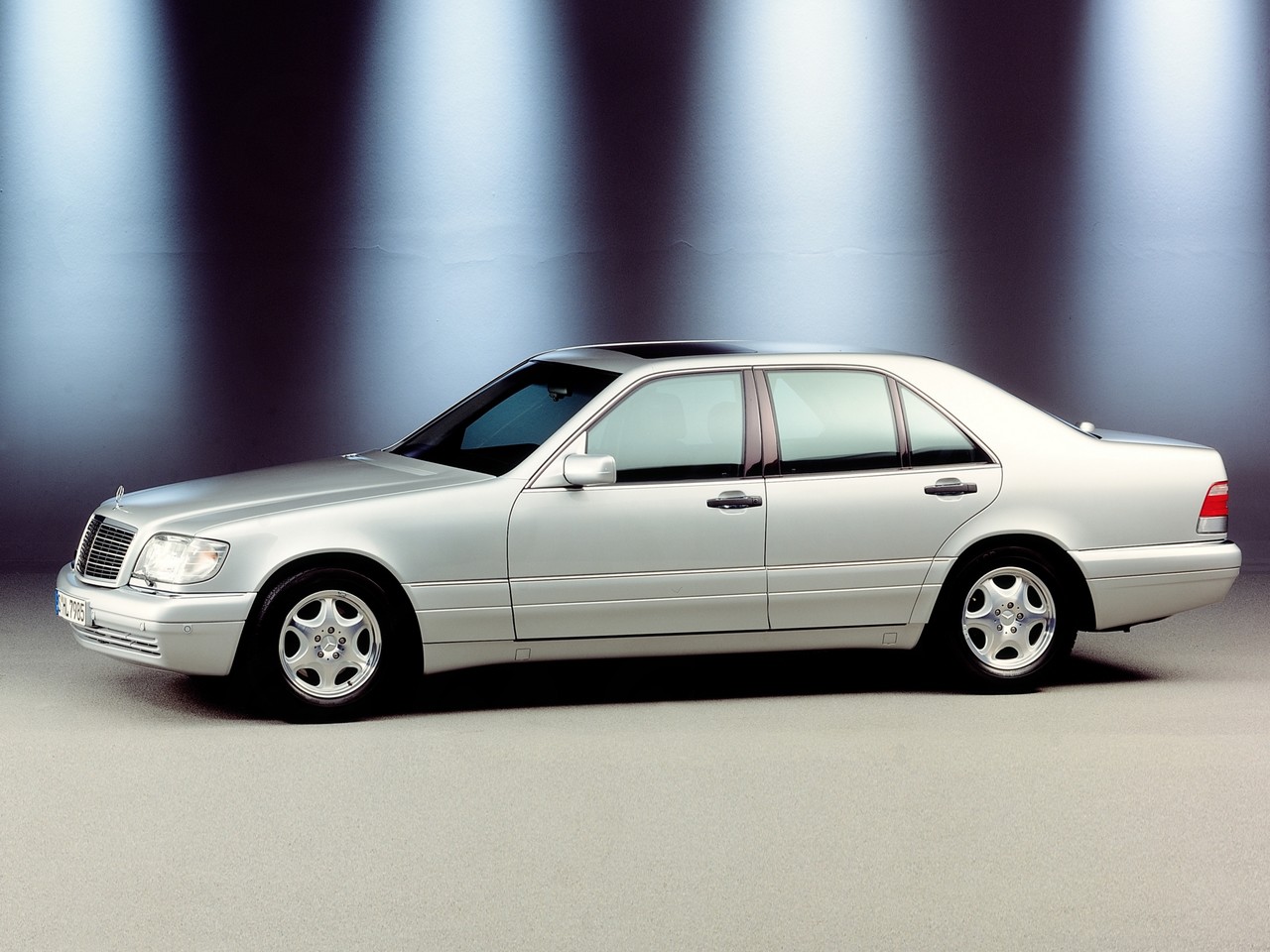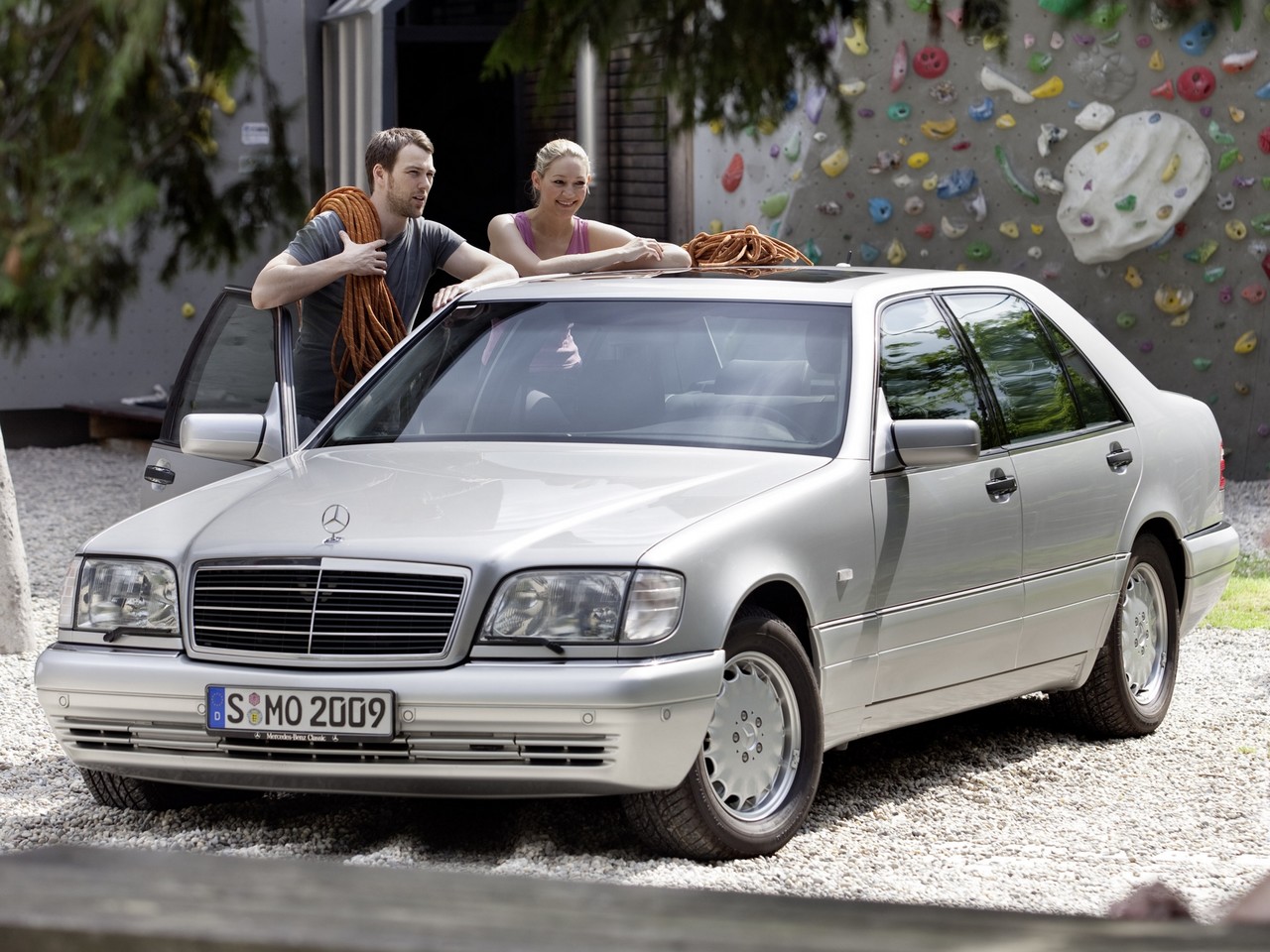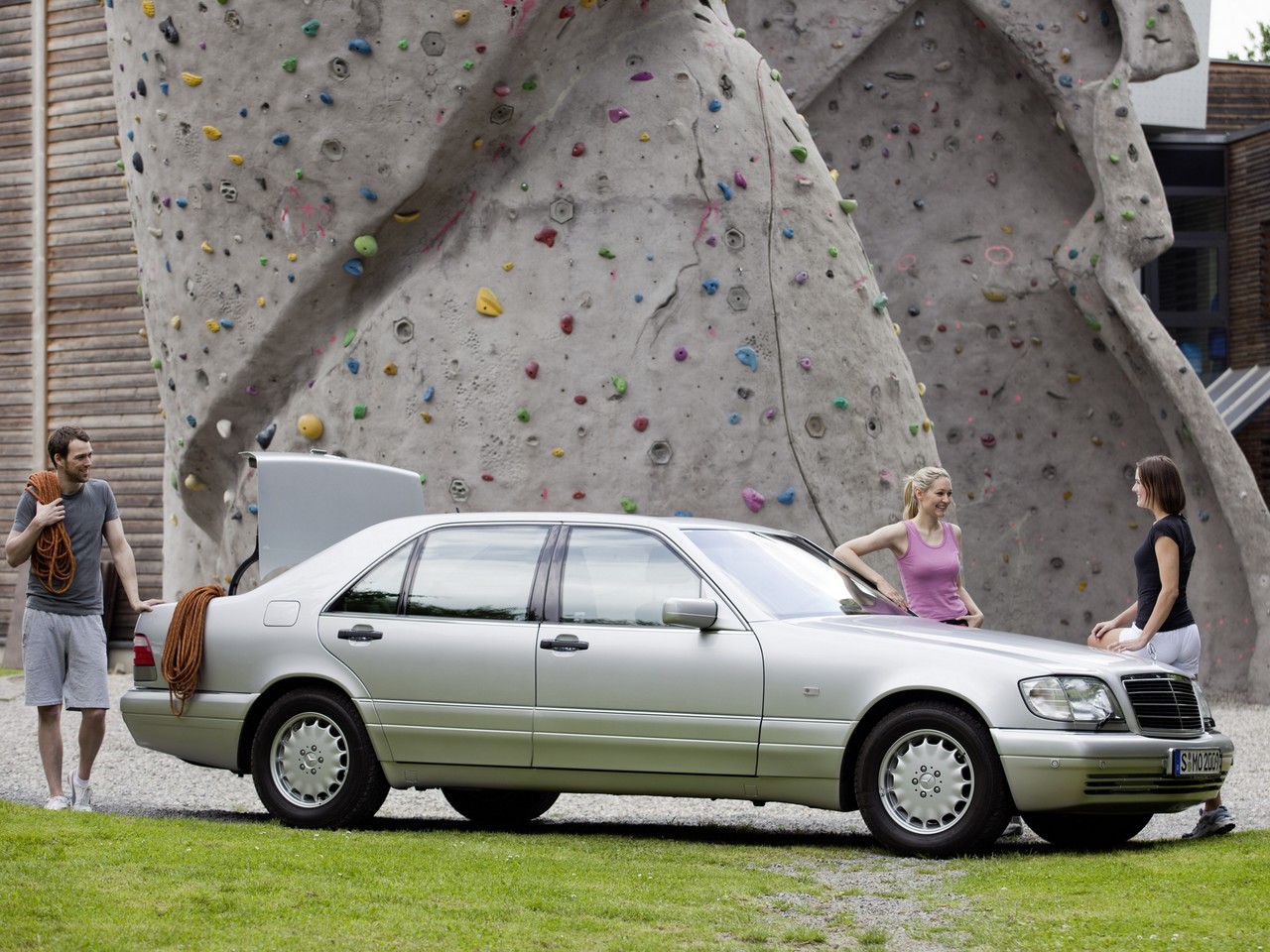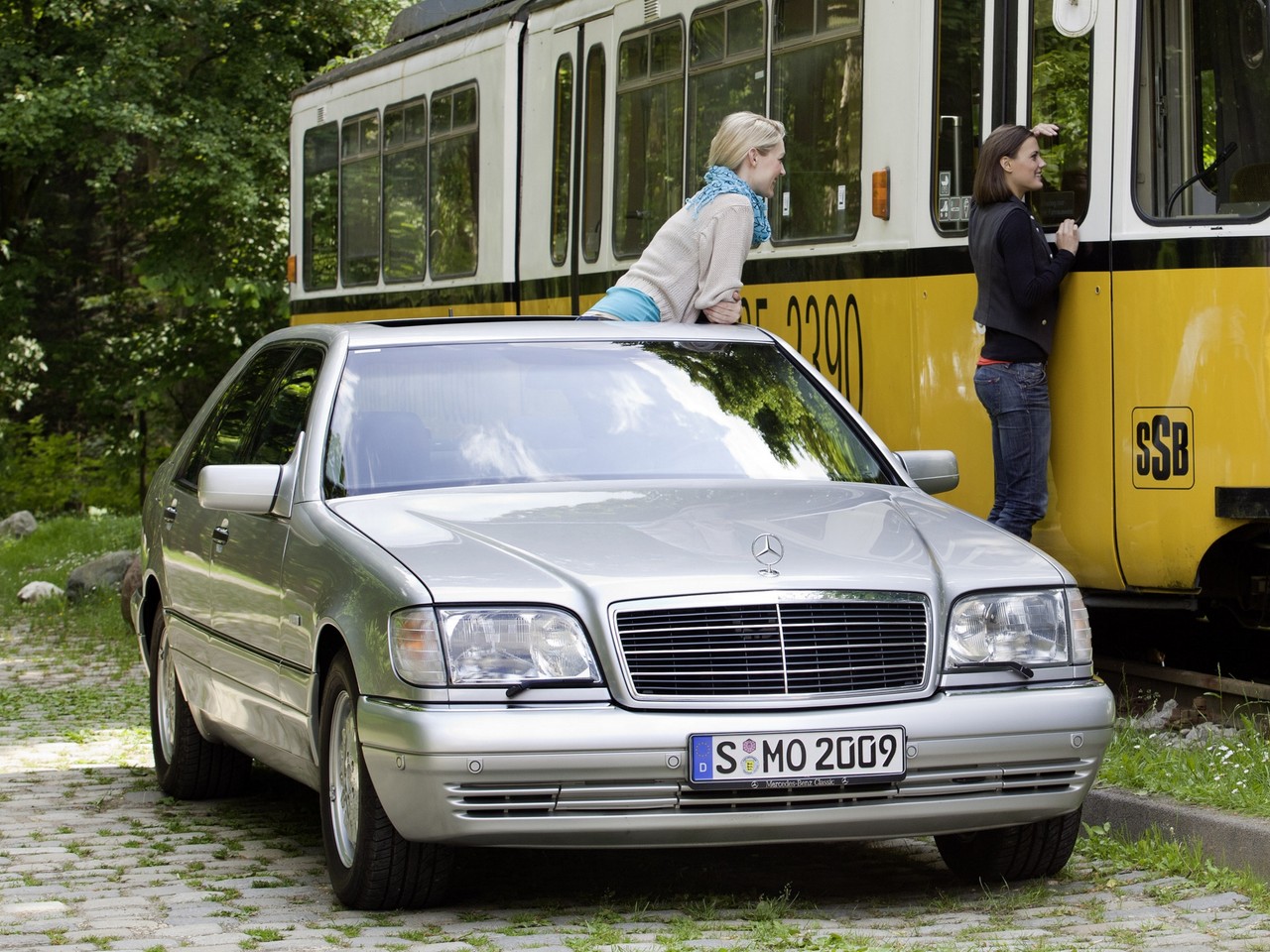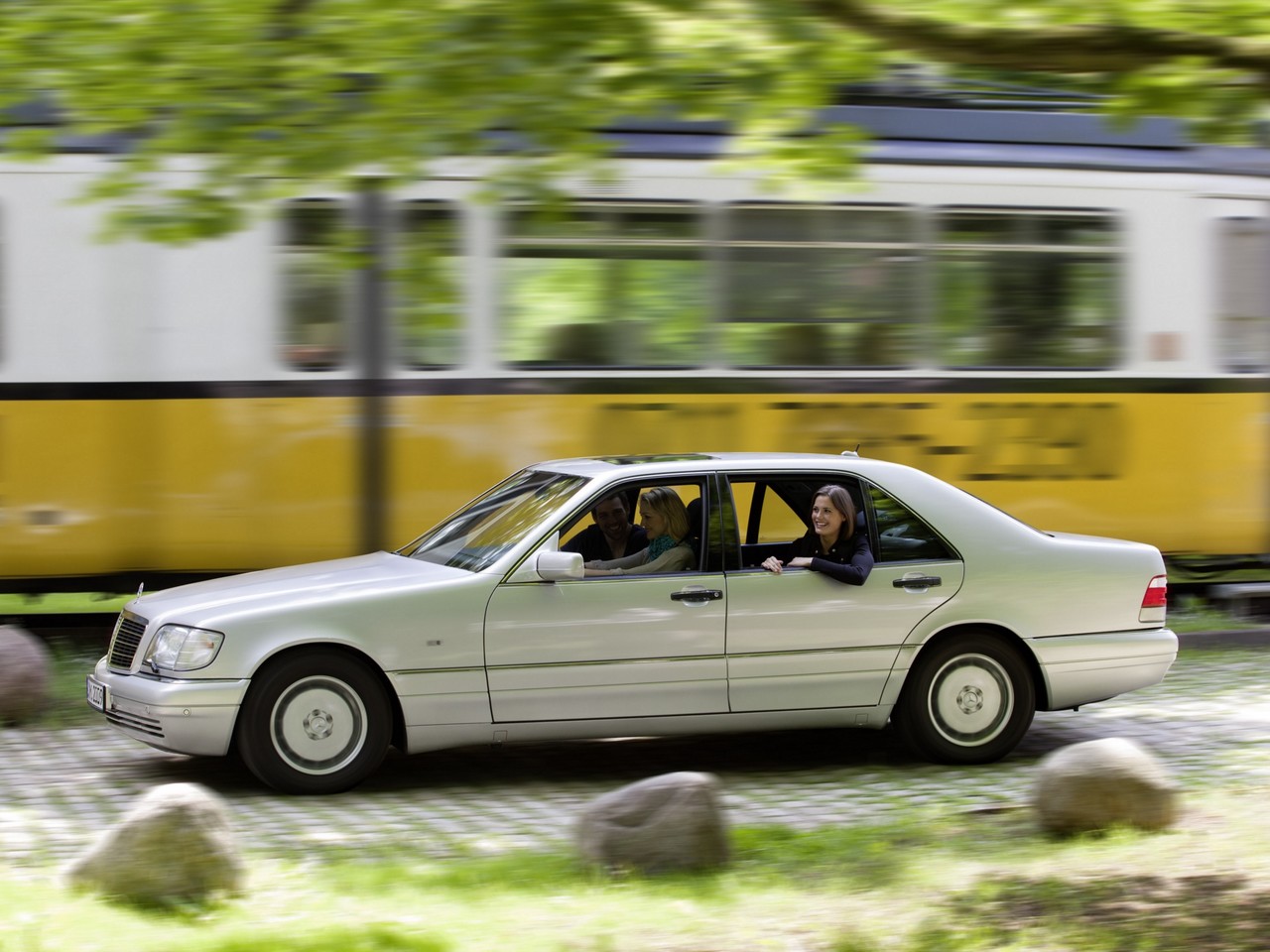
- Refined powertrains
- Comfortable ride
- Quiet, well-insulated cabin
- Body feels solid and rigid
- High standard of fit and finish
- Steering lacks feel
- Weight blunts agility
- Heavy tyre wear
- High running and maintenance costs
Mercedes-Benz W140.I and V140.I S-Class (1992-94)
Overview
The Mercedes-Benz W140 and V140 S-Class were prestige sedans with standard and long wheelbases, respectively. Manufactured in Stuttgart, Germany, the W140/V140 S-Class was released in Australia in April 1992 and the range initially consisted of the 300 SE, 400 SE, 400 SEL, 500 SEL and 600 SEL models. In June 1993, however, engine-based model names were introduced, resulting in the S 320, S 420, S 420 L, S 500 L and S 600 L. The full range is given in the table below.
| Model | Years | Engine | Trans. | Peak power | Peak torque |
|---|---|---|---|---|---|
| 300 SE | 1992-93 | 3.2-litre petrol I6 (M104 E32) | 5sp auto | 170 kW at 5800 rpm | 310 Nm at 4100 rpm |
| S 320 | 1993-94 | 3.2-litre petrol I6 (M104 E32) | 5sp auto | 170 kW at 5600 rpm | 315 Nm at 3750 rpm |
| 400 SE | 1992-93 | 4.2-litre petrol V8 (M119 E42) | 4sp auto | 210 kW at 5700 rpm | 410 Nm at 3900 rpm |
| S 420 | 1993-94 | 4.2-litre petrol V8 (M119 E42) | 4sp auto | 210 kW at 5700 rpm | 400 Nm at 3900 rpm |
| 400 SEL | 1992-93 | 4.2-litre petrol V8 (M119 E42) | 4sp auto | 210 kW at 5700 rpm | 410 Nm at 3900 rpm |
| S 420 L | 1993-94 | 4.2-litre petrol V8 (M119 E42) | 4sp auto | 210 kW at 5700 rpm | 400 Nm at 3900 rpm |
| 500 SEL | 1992-93 | 5.0-litre petrol V8 (M119 E50) | 4sp auto | 240 kW at 5700 rpm | 480 Nm at 3900 rpm |
| S 500 L | 1993-94 | 5.0-litre petrol V8 (M119 E50) | 4sp auto | 235 kW at 5600 rpm | 470 Nm at 3900 rpm |
| 600 SEL | 1992-93 | 6.0-litre petrol V12 (M120 E60) | 4sp auto | 300 kW at 5200 rpm | 580 Nm at 3800 rpm |
| S 600 L | 1993-94 | 6.0-litre petrol V12 (M120 E60) | 4sp auto | 290 kW at 5200 rpm | 570 Nm at 3800 rpm |
Development and dimensions
Replacing the W126 S-Class, development of the W140/V140 S-Class commenced in 1981 and reportedly cost in excess of $1 billion USD. The W140/V140 S-Class, however, featured several innovations, including double-glazed windows, self-closing doors and boot lid, extendable rear parking guide rods and a can-bus electronic network.
Styled under the direction of chief designer Bruno Sacco, the standard wheelbase W140 was 5113 mm long, 1886 mm wide, 1486 mm tall and had a 3040 mm long wheelbase. The long wheelbase V140 models, however, had 100 mm longer wheelbases (at 3140 mm) and, accordingly, were 100 mm longer (at 5213 mm long).
Suspension and steering
The W140/V140 S-Class had double wishbone front suspension and independent, multi-link rear suspension (both with gas-pressurised hydraulic shock absorbers, coil springs and anti-roll bars). The 500 SEL/S 500 L and 600 SEL/ S 600 L were further equipped with self-levelling hydropneumatic rear suspension, while the latter also had Adaptive Damping Suspension (ADS) with selectable Sport and Comfort settings.
The W140/V140 S-Class had recirculating ball steering with speed-sensitive power-assistance (Mercedes-Benz’s ‘parameter steering’).
Safety equipment
Standard safety equipment for the Mercedes-Benz W140 and V140 S-Class initially consisted of a driver’s airbag and ABS, while the 600 SEL was further equipped with a passenger side airbag.
The 500 SEL/S 500 L and 600 SEL/S 600L were also fitted with Mercedes-Benz’s Automatic Slip Control (ASR) traction control system. At speeds below 40 km/h, the traction control system would first apply the brakes to either of both of the rear wheels and then reduce engine throttle until traction was regained. At speeds above 40 km/h, throttle would be reduced before the brakes were applied.
In June 1993, standard features were extended to include a front passenger airbag.
Features
Standard features for Australian-delivered Mercedes-Benz 300 SE models included 15-inch alloy wheels, a sound system with a ten stack CD player, dual-zone climate control air conditioning, a twelve-way power adjustable front seats, leather seats and upholstery, cruise control, front fog lights, central locking, power windows, power mirrors with a folding function, a height and reach adjustable steering wheel, driver memory settings (for the seat, steering wheel and mirrors), extendable rear parking guide rods, an electrochromatic rear view mirror, front and rear courtesy lights, reading lights, vanity mirrors, zebrano wood interior trim and an alarm.
With the introduction of the S 320 in June 1993, standard features were extended to include remote central locking, while the 400 SE, 400 SEL, S 420 and S 420 L were also fitted with self-closing doors.
Beyond this, the 500 SEL and S 500 L added heated front and rear seats, power adjustable head restraints, power adjustable rear seats, heated mirrors, a power adjustable steering wheel (height and reach), rear reading lamps, illuminated vanity mirrors, rear headrests, burl walnut interior trim and a charcoal filter for the air conditioning system.
Beyond this, the 600 SEL and S 600 L added double-glazed windows, a power adjustable rear-view mirror, an integrated cellular telephone and powered rear blinds.
Mercedes-Benz W140.II and V140.II S-Class (1994-96)
Overview
Produced from March 1994, the Mercedes-Benz W140 and V140 Series II (W140.II and V140.II) S-Class was available in Australia from mid-1994. Visually, the W140.II S-Class could be identified by its lowered ride height, brighter headlights, clear front indicator lenses, a swage line within the bumpers and side cladding and a revised rear bumper (for a wider and lower appearance). Furthermore, the six- and eight-cylinder models received a new radiator grille with vertical articulation, while the S600 L had a chrome fin grille. A few months after these changes, more rounded door mirrors were also introduced.
Inside, there were new door panels with thicker armrests and deeper storage compartments, a digital odometer and more affordable plastics and leather upholstery. The latter measures were introduced as a cost-saving measure by Mercedes-Benz.
In October 1995, the W140.II/V140.II S-Class range was expanded with the introduction of an entry-level S 280 model.
September 1995: S-Class update
In September 1995, several mechanical upgrades were introduced:
- Electronically-controlled five-speed automatic transmissions were introduced for the S 420, S 420 L, S 500 L and S 600 L models;
- The 4.2- and 5.0-litre M119 V8 petrol engines were fitted new crankshafts, lighter pistons, dedicated ignition coils for each cylinder, an optimised valve control system and the Bosch Motronic ME 1.0 engine management system which used a hot-film air flow sensor in place of the hot-wire air mass sensor (as used in the previous Bosch LH Jetronic system); and,
- The 6.0-litre M120 V12 petrol engine was also fitted with dedicated ignition coils for each cylinder and Bosch Motronic ME 1.0 engine management.
| Model | Engine | Trans. | Years | Peak power | Peak torque |
|---|---|---|---|---|---|
| S 280 | 2.8-litre petrol I6 (M104 E28) | 4sp auto | 1995-96 | 142 kW at 5500 rpm | 270 Nm at 3750 rpm |
| S 320 | 3.2-litre petrol I6 (M104 E32) | 5sp auto | 1994-96 | 170 kW at 5600 rpm | 315 Nm at 3750 rpm |
| S 420 | 4.2-litre petrol V8 (M119 E42) | 4sp auto | 1994-95 | 205 kW at 5700 rpm | 400 Nm at 3900 rpm |
| 5sp auto | 1995-96 | ||||
| S 420 L | 4.2-litre petrol V8 (M119 E42) | 4sp auto | 1994-95 | 205 kW at 5700 rpm | 400 Nm at 3900 rpm |
| S 500 L | 5.0-litre petrol V8 (M119 E50) | 4sp auto | 1994-95 | 235 kW at 5600 rpm | 470 Nm at 3900 rpm |
| 5sp auto | 1995-96 | ||||
| S 600 L | 6.0-litre petrol V12 (M120 E60) | 4sp auto | 1994-95 | 290 kW at 5200 rpm | 570 Nm at 3800 rpm |
| 5sp auto | 1995-96 |
Safety equipment
Standard safety equipment for the Mercedes-BEnz W140.II and V140.II S-Class was initially unchanged. From September 1995, however, the S 600 L was fitted with electronic stability control (ESC) as standard; ESC was also available as an option for the S 420, S 420 L and S 500 L.
Features
Standard features for the W140.II and V140.II S-Class were largely unchanged, though the rear parking guides were discontinued in May 1995.
Interior features for the S 600 L models were revised to include a Becker sound system, two-tone Nappa leather upholstery with double stitching and a combination wood/leather steering wheel; the power adjustable rear-view mirror, however, was omitted.
From May 1995, the S 600 L was fitted with front and rear parking sensors (Mercedes-Benz’s ‘Parktronic’) as standard. For other S-Class models, the parking guides were omitted and parking sensors were available as an option.
Mercedes-Benz W140.III and V140.III S-Class (1996-98)
Overview
Released in June 1996, the Mercedes-Benz W140 and V140 Series III (W140.III and V140.II) S-Class introduced cosmetic updates and improved safety equipment. Visually, the updated S-Class could be identified by its monotone exterior (i.e. body-coloured bumpers and side cladding) and white rear indicator lenses.
| Model | Engine | Trans. | Years | Peak power | Peak torque |
|---|---|---|---|---|---|
| S 280 | 2.8-litre petrol I6 (M104 E28) | 4sp auto | 1996-98 | 142 kW at 5500 rpm | 270 Nm at 3750 rpm |
| S 320 | 3.2-litre petrol I6 (M104 E32) | 5sp auto | 1996-98 | 170 kW at 5600 rpm | 315 Nm at 3750 rpm |
| S 420 | 4.2-litre petrol V8 (M119 E42) | 5sp auto | 1996-98 | 205 kW at 5700 rpm | 400 Nm at 3900 rpm |
| S 500 | 5.0-litre petrol V8 (M119 E50) | 5sp auto | 1996-98 | 235 kW at 5600 rpm | 470 Nm at 3900 rpm |
| S 600 L | 6.0-litre petrol V12 (M120 E60) | 5sp auto | 1996-98 | 290 kW at 5200 rpm | 570 Nm at 3800 rpm |
Safety equipment
Compared to their predecessors, standard safety equipment for the Mercedes-Benz W140.III and V140.III S-Class was extended to include traction control (Mercedes-Benz’s ASR) and front door-mounted side airbags. The front passenger seat was also fitted with an occupancy sensor to determine whether to activate the front passenger airbag in the event of a collision.
From December 1996, brake assist and electronic stability control were available across the range.
Features
Standard features for the Mercedes-Benz W140.III and V140.III S-Class were extended to include rain-sensing wipers (which sensed the amount of water and varied the wiper interval accordingly) and luggage nets in the front passenger footwell and boot.
As an option, self-cleaning xenon headlights with dynamic range control were also introduced.
Related links
